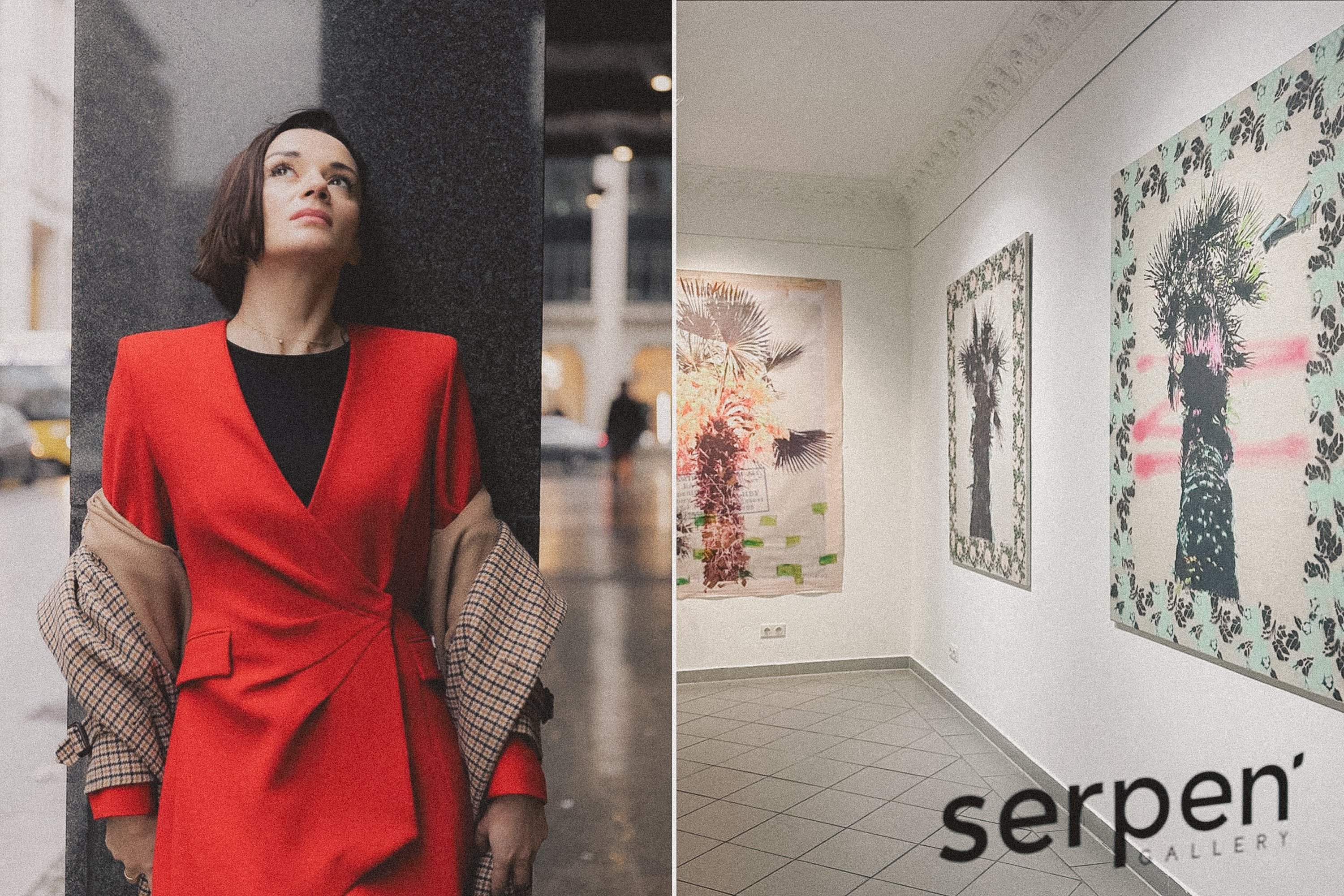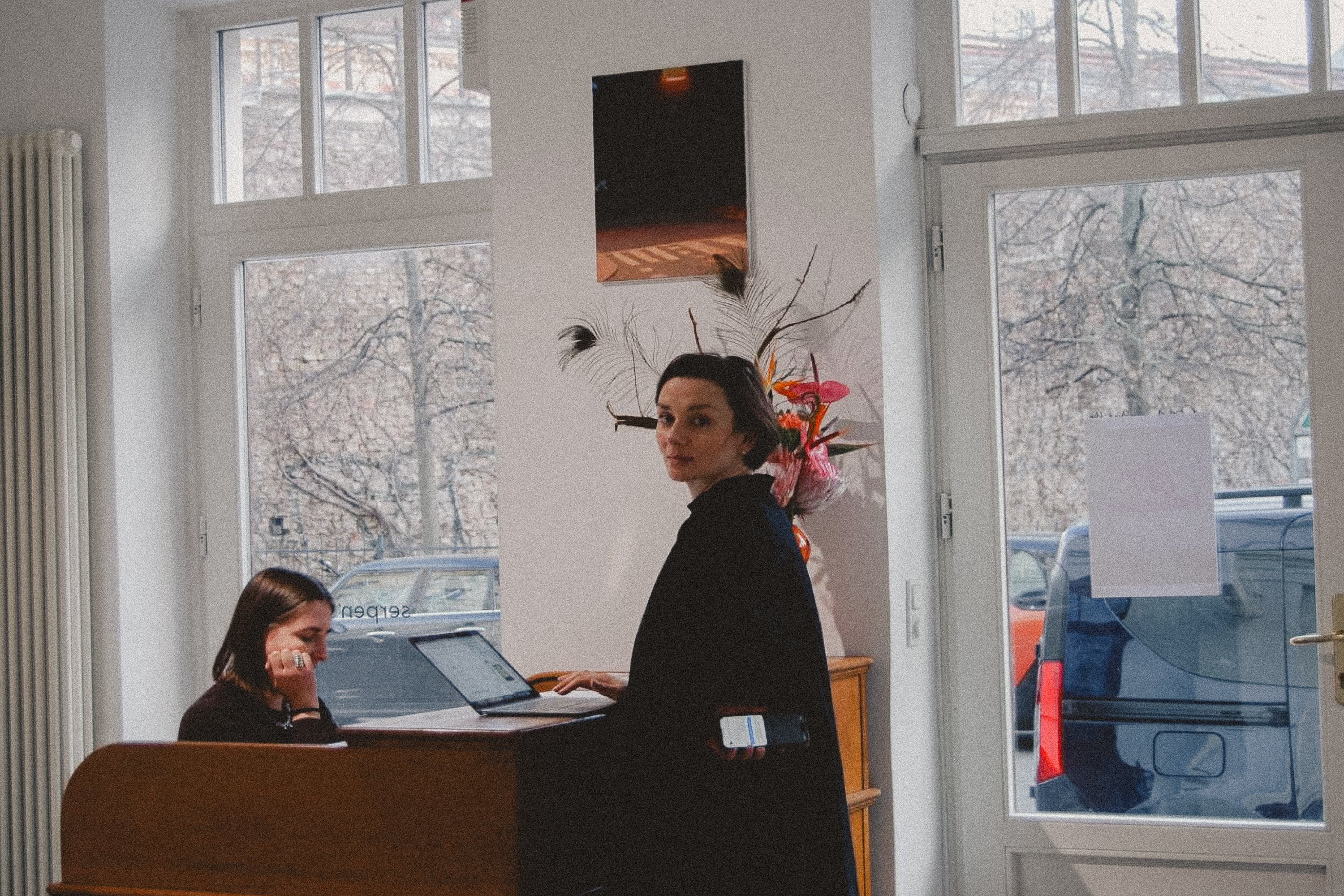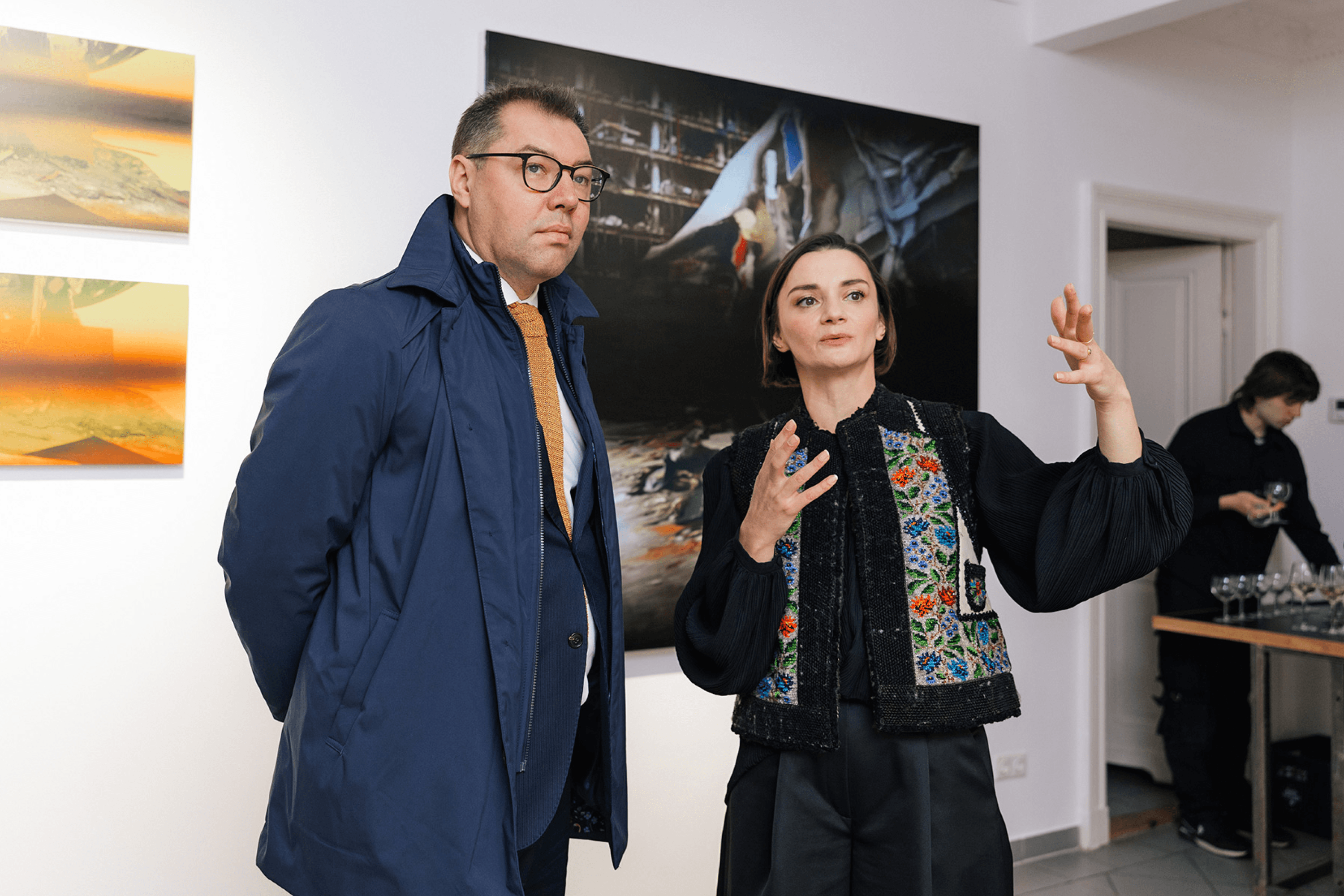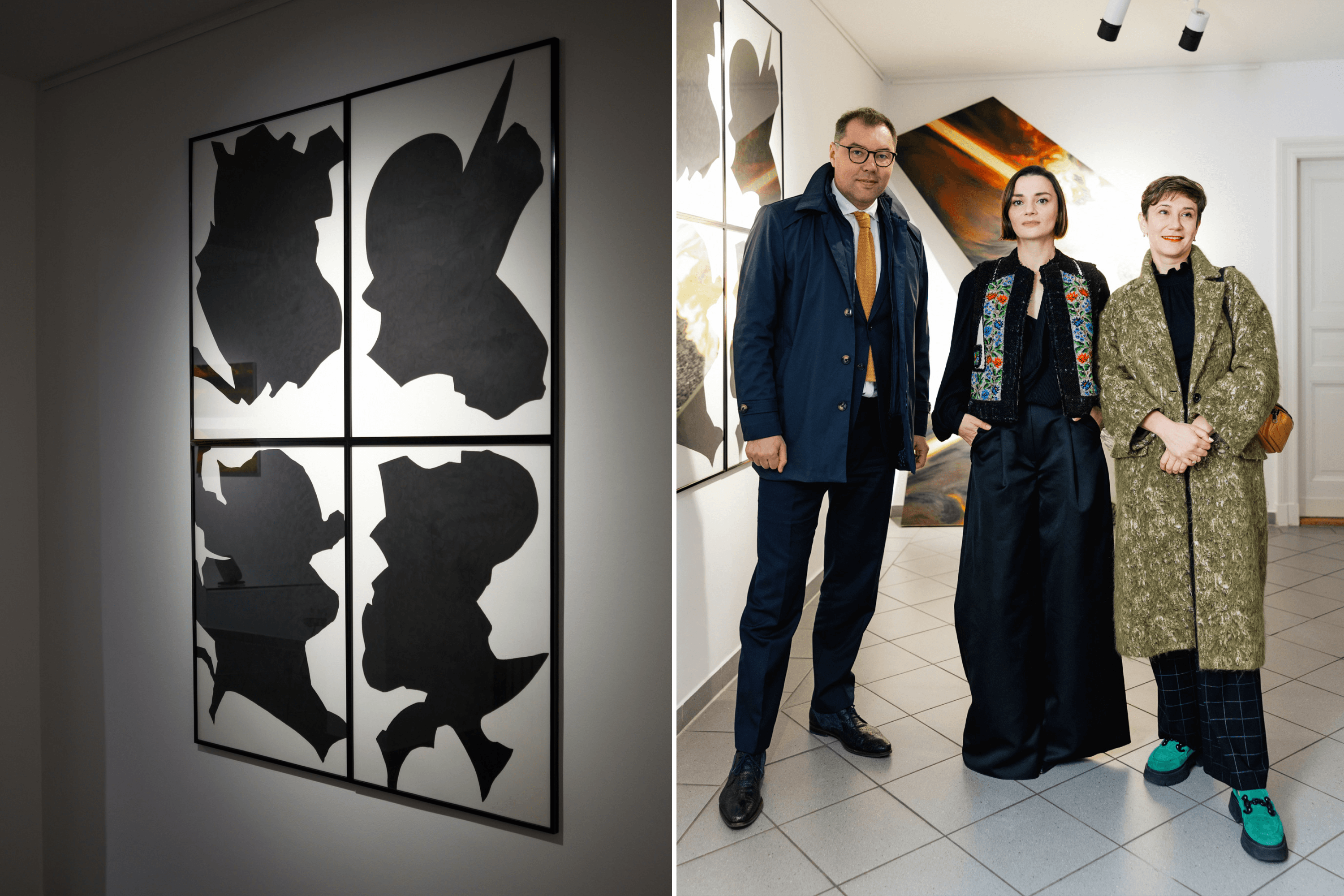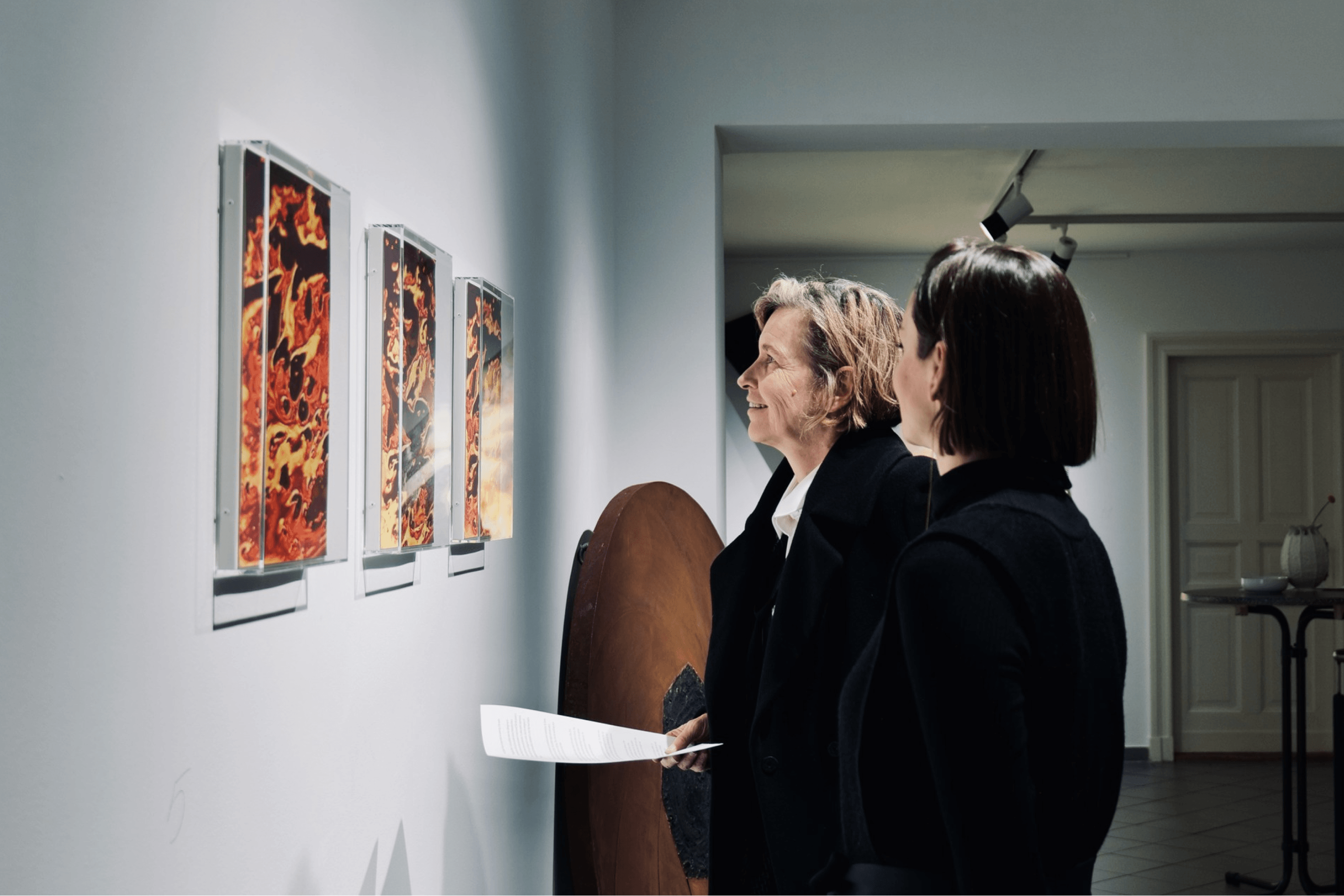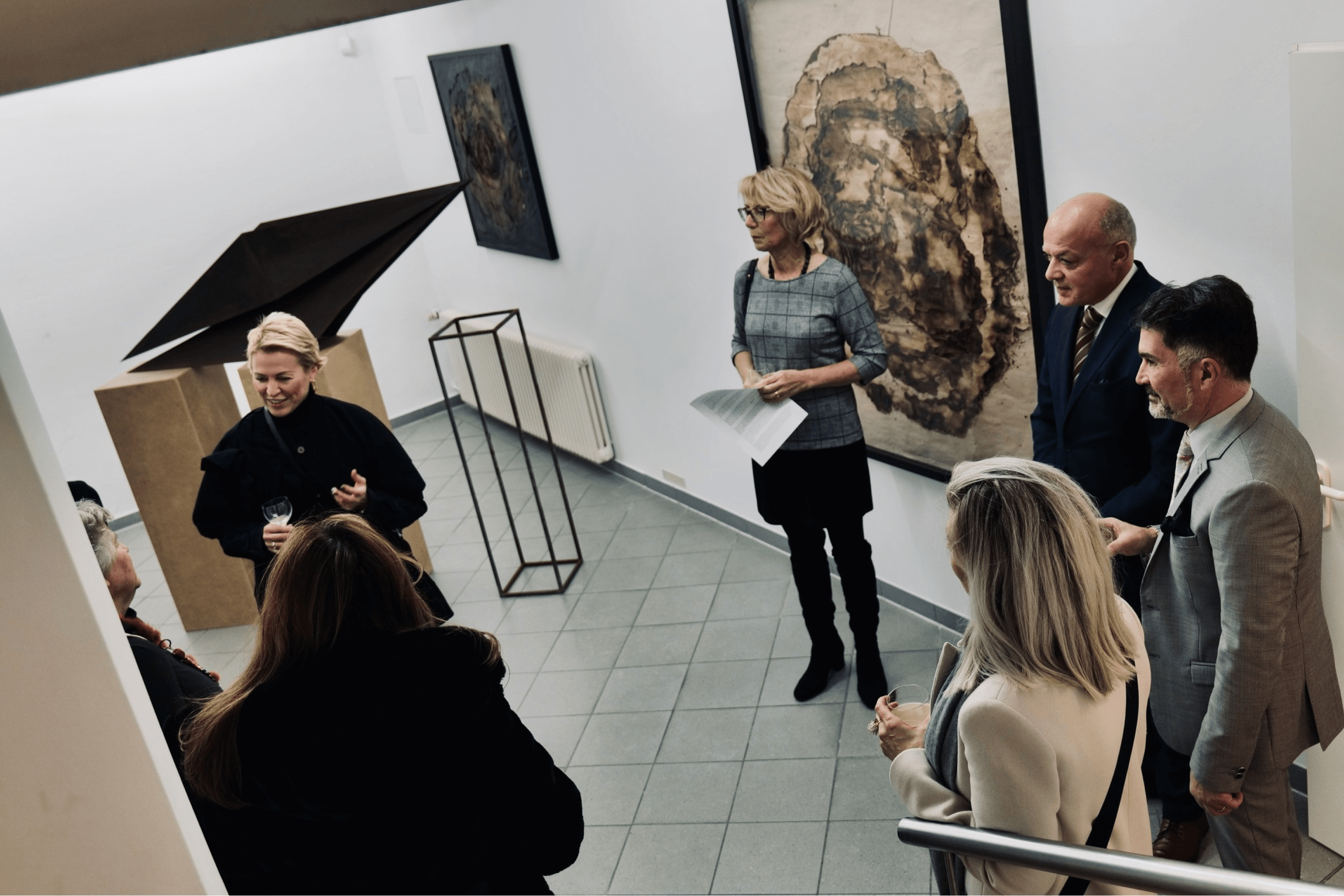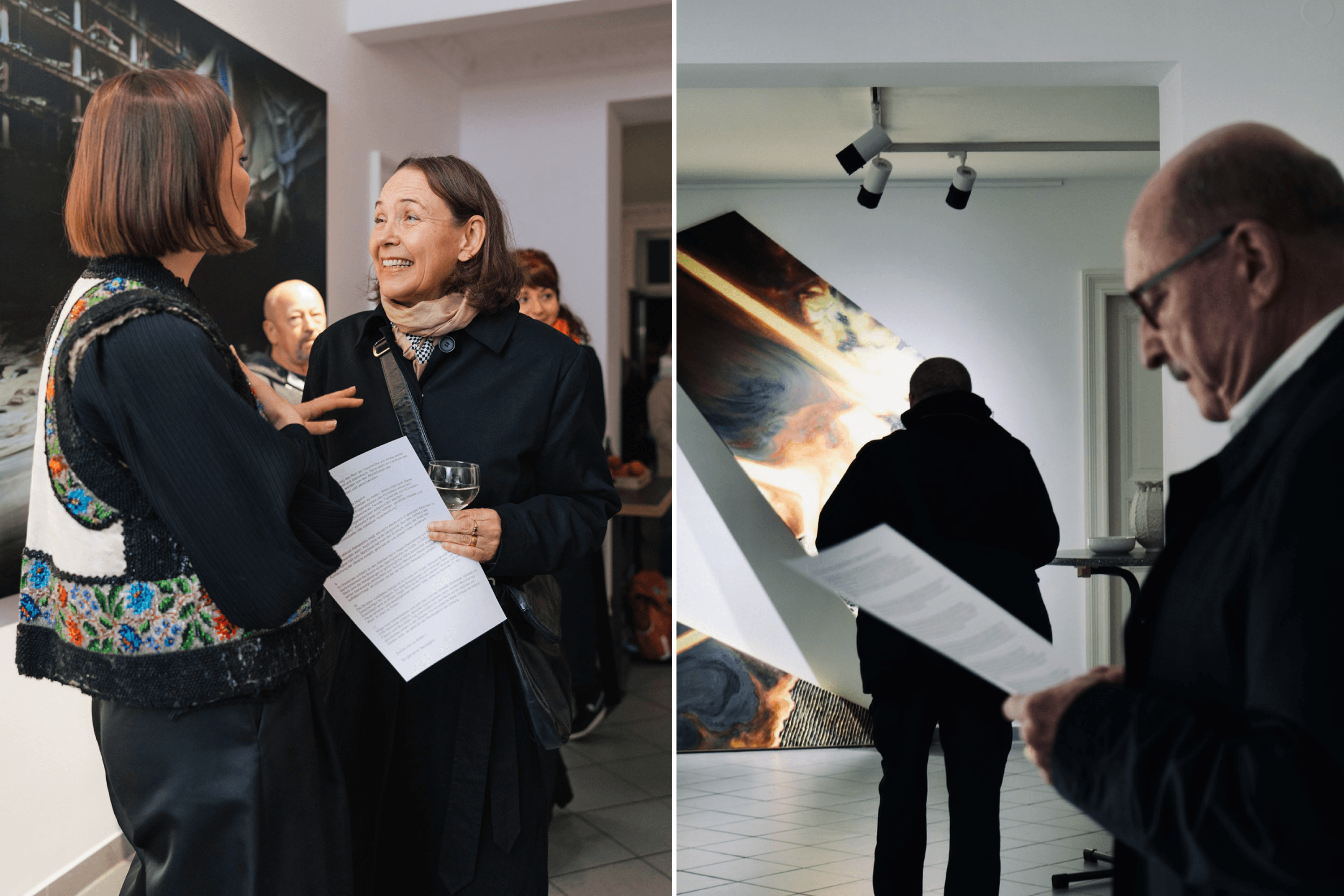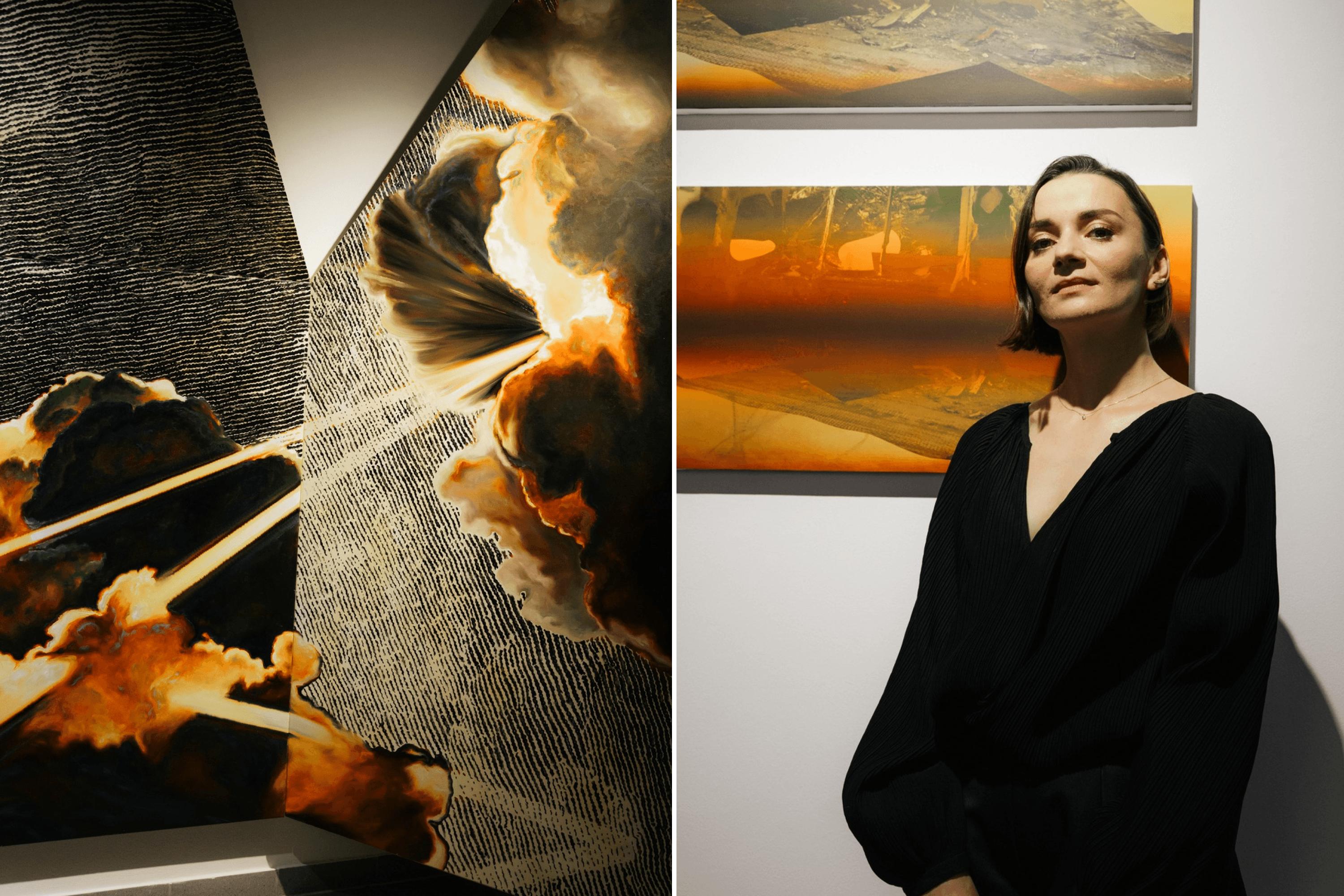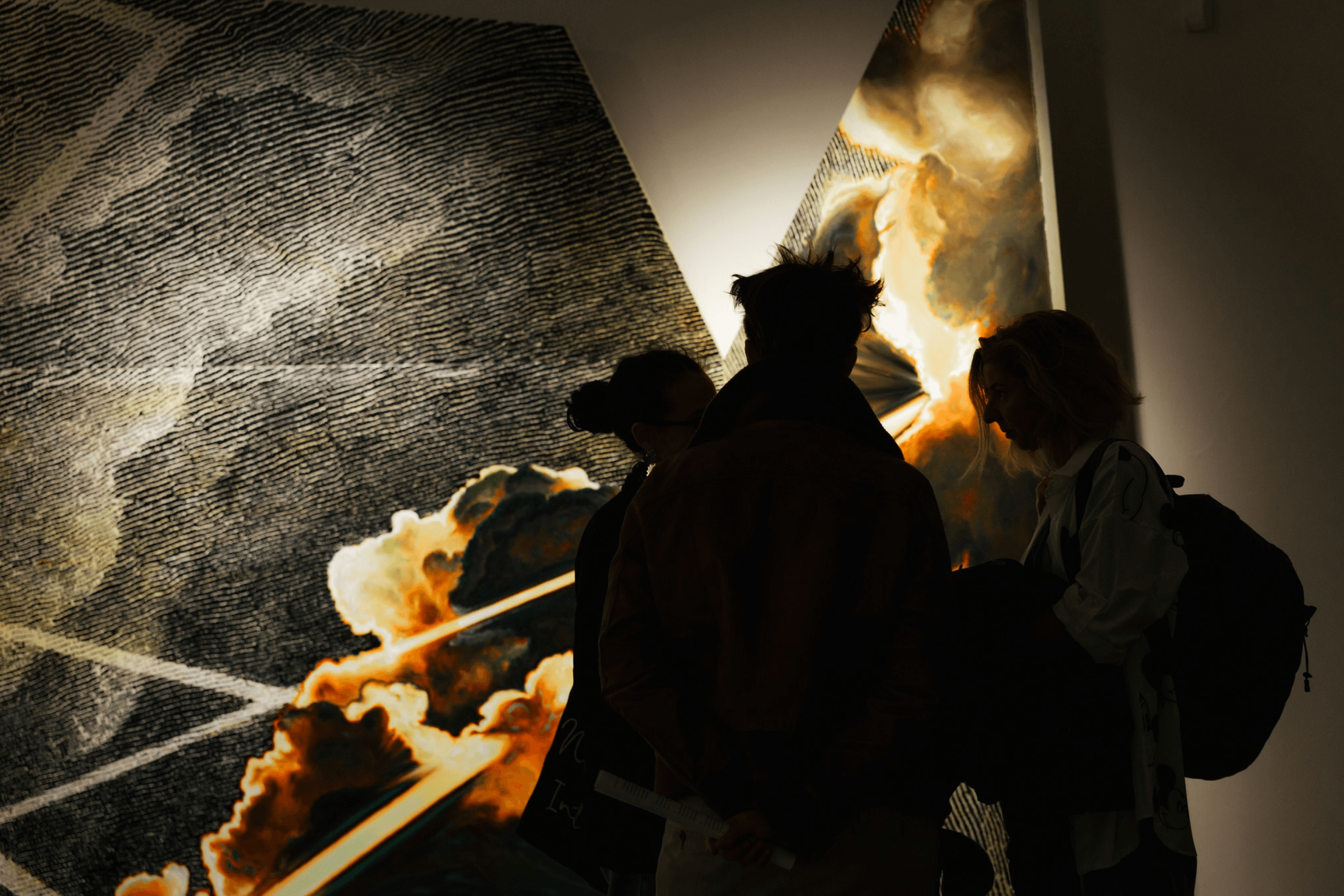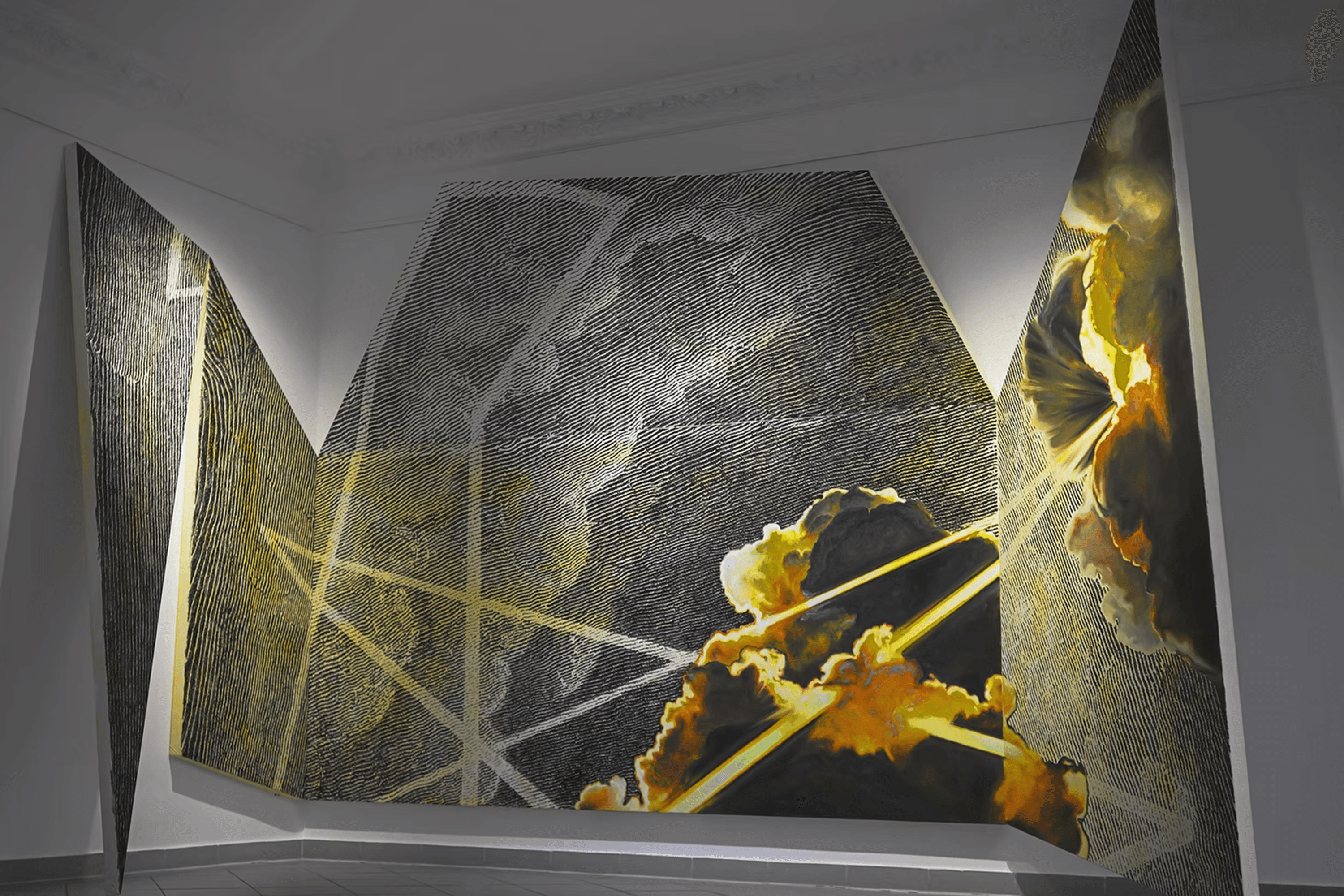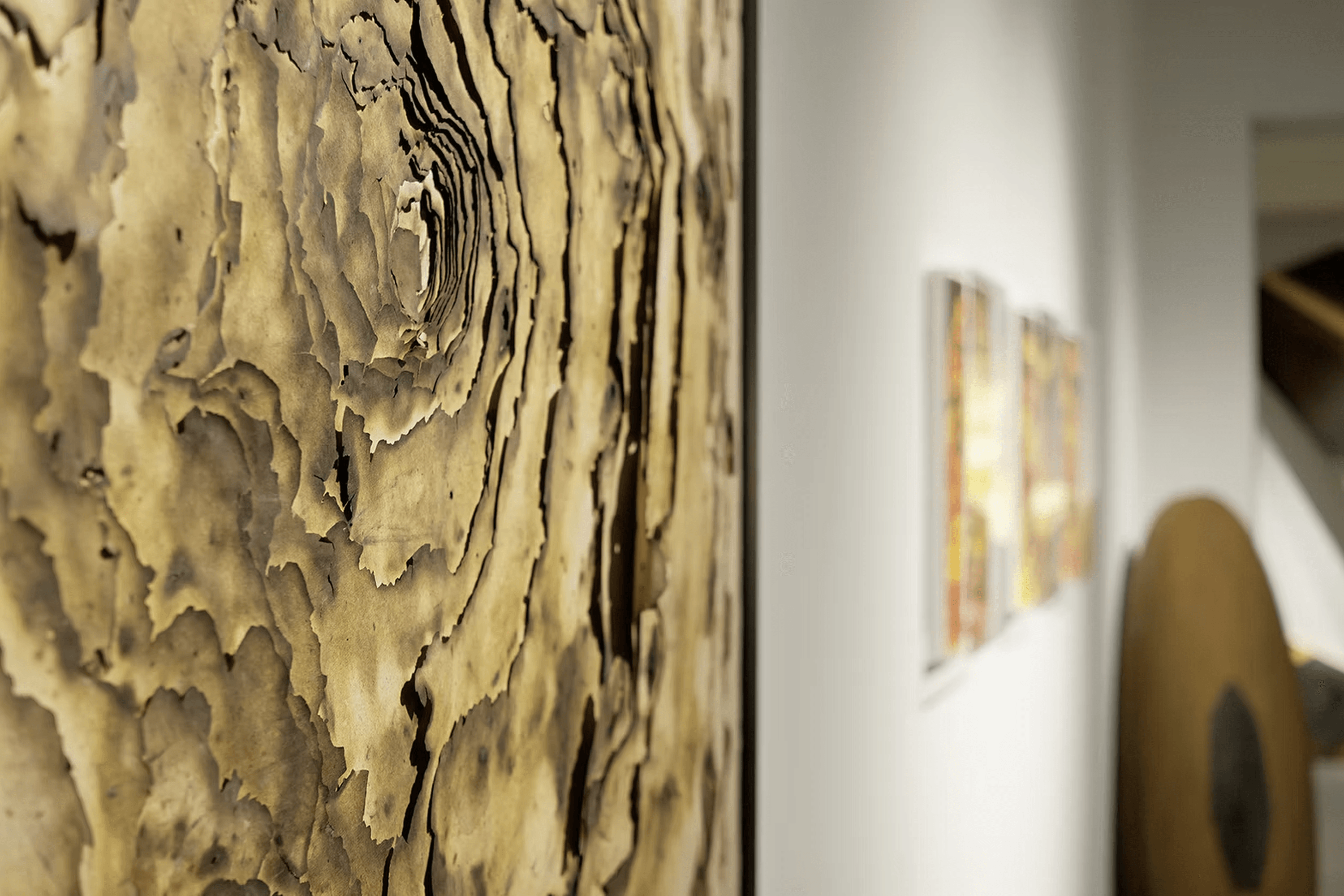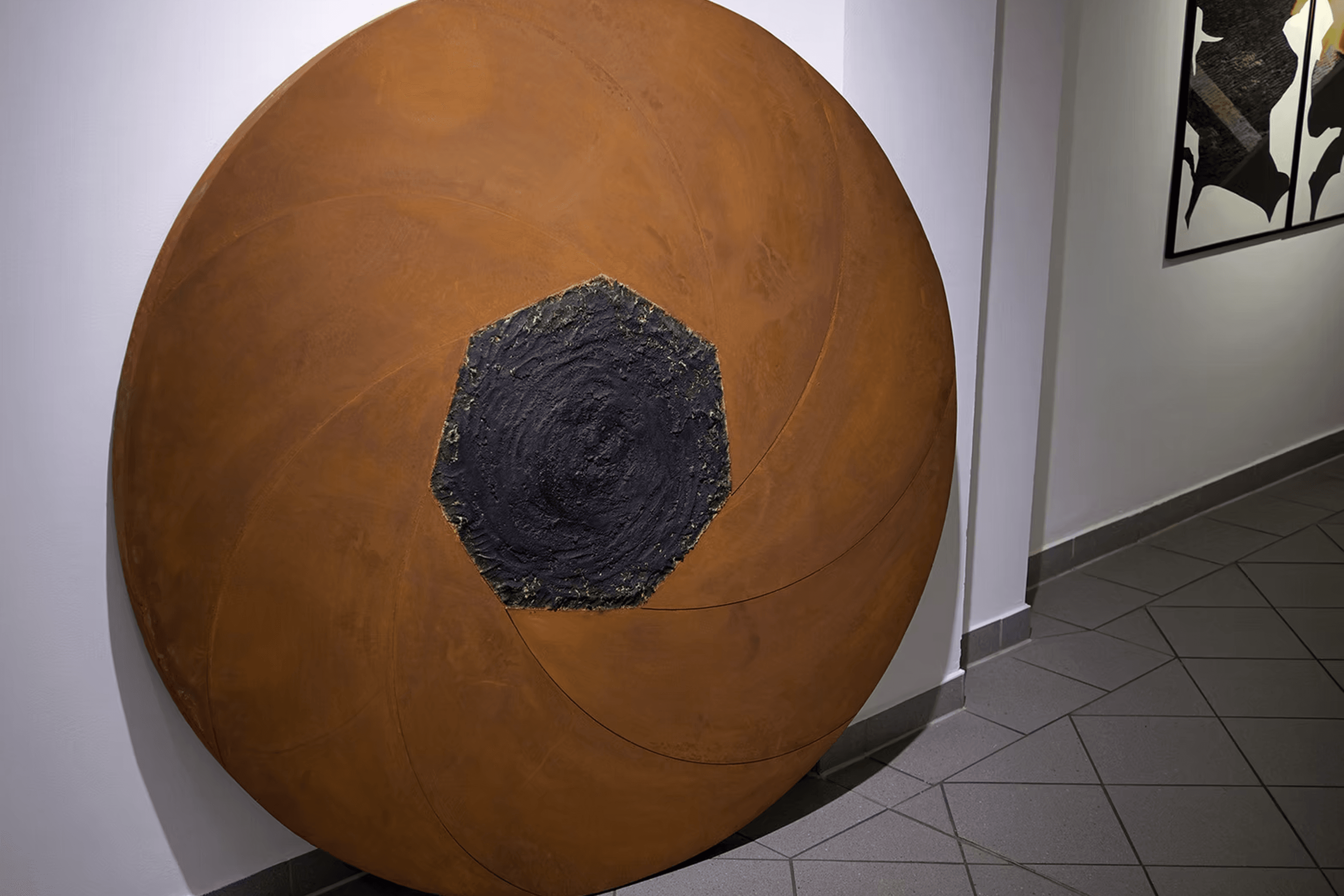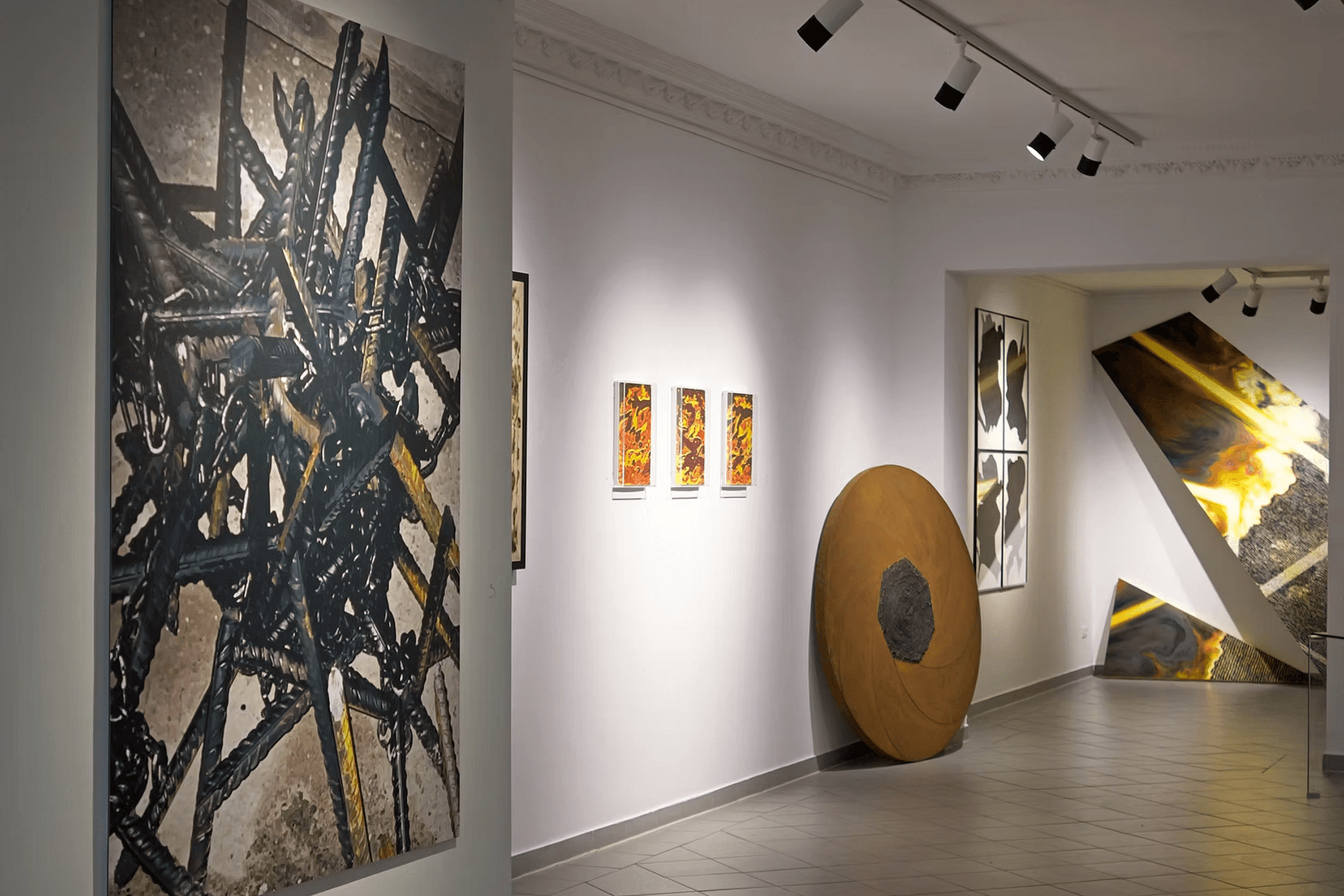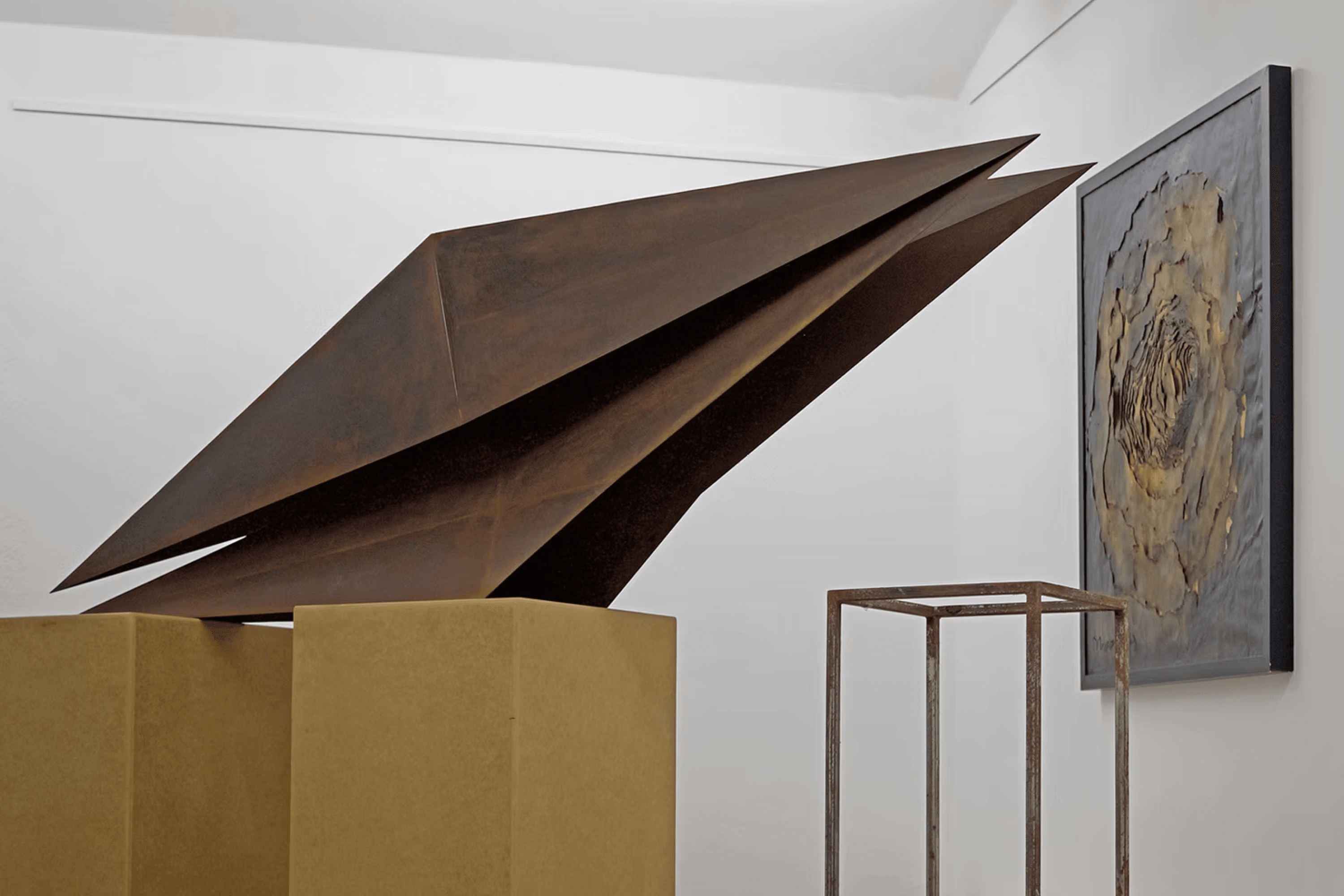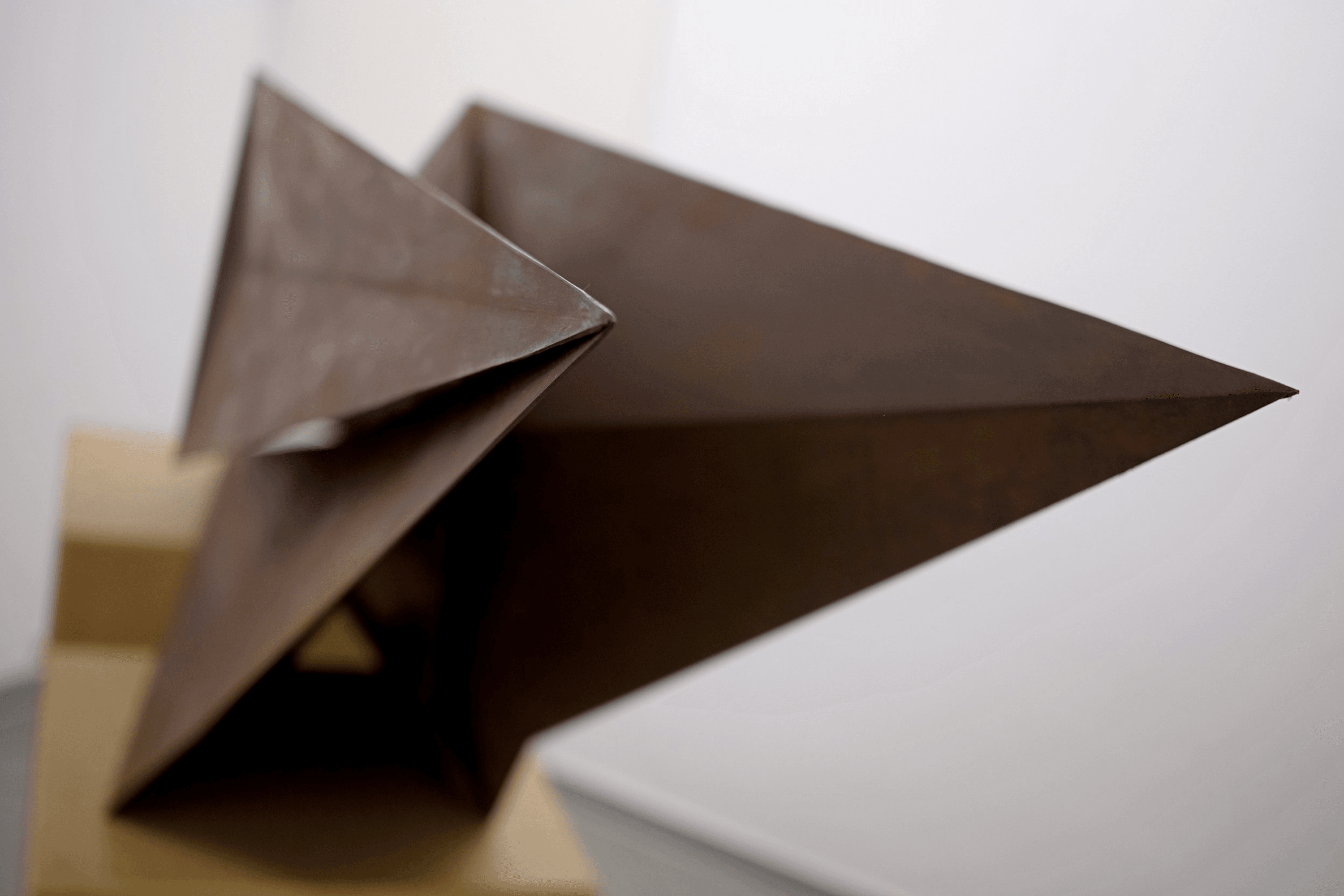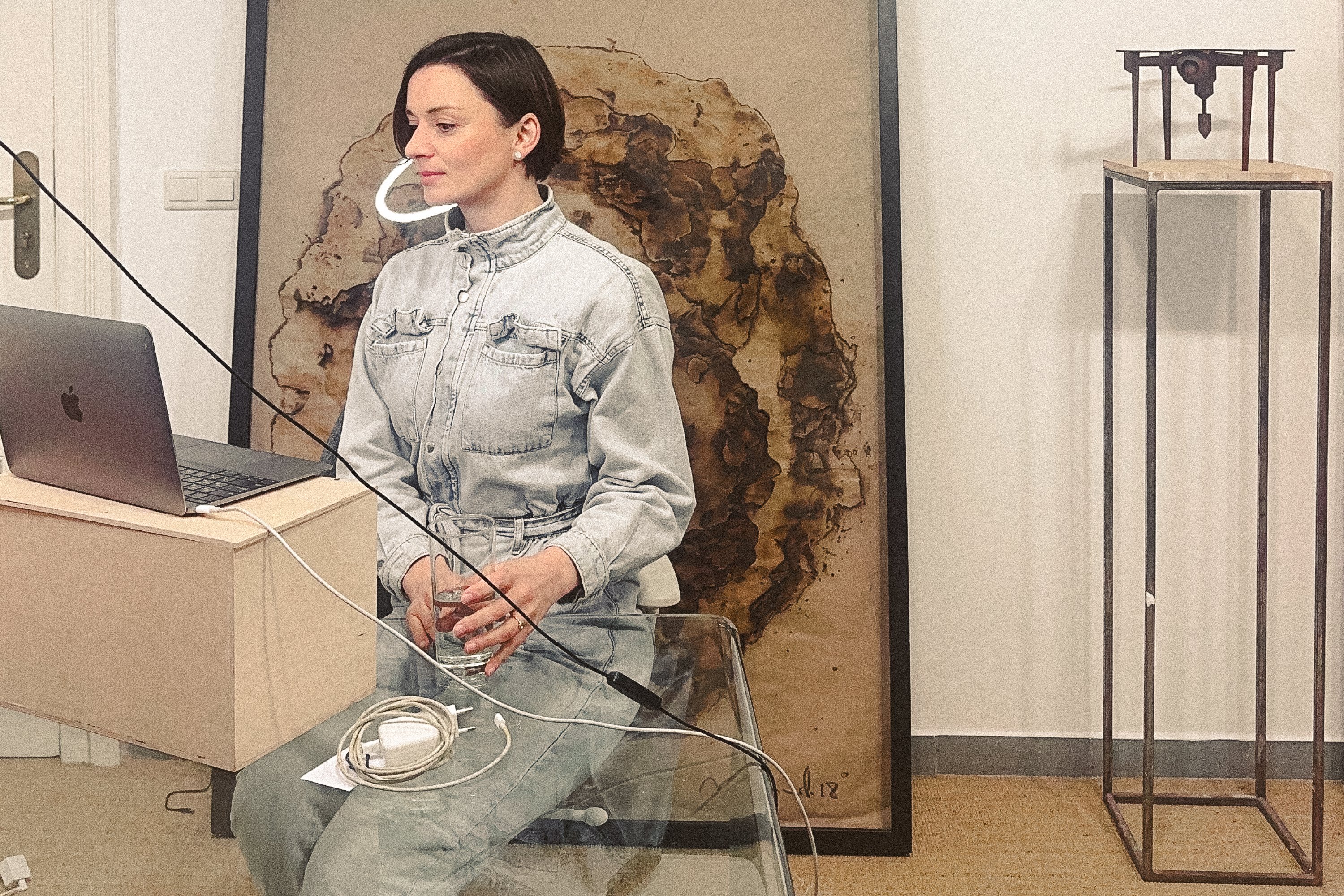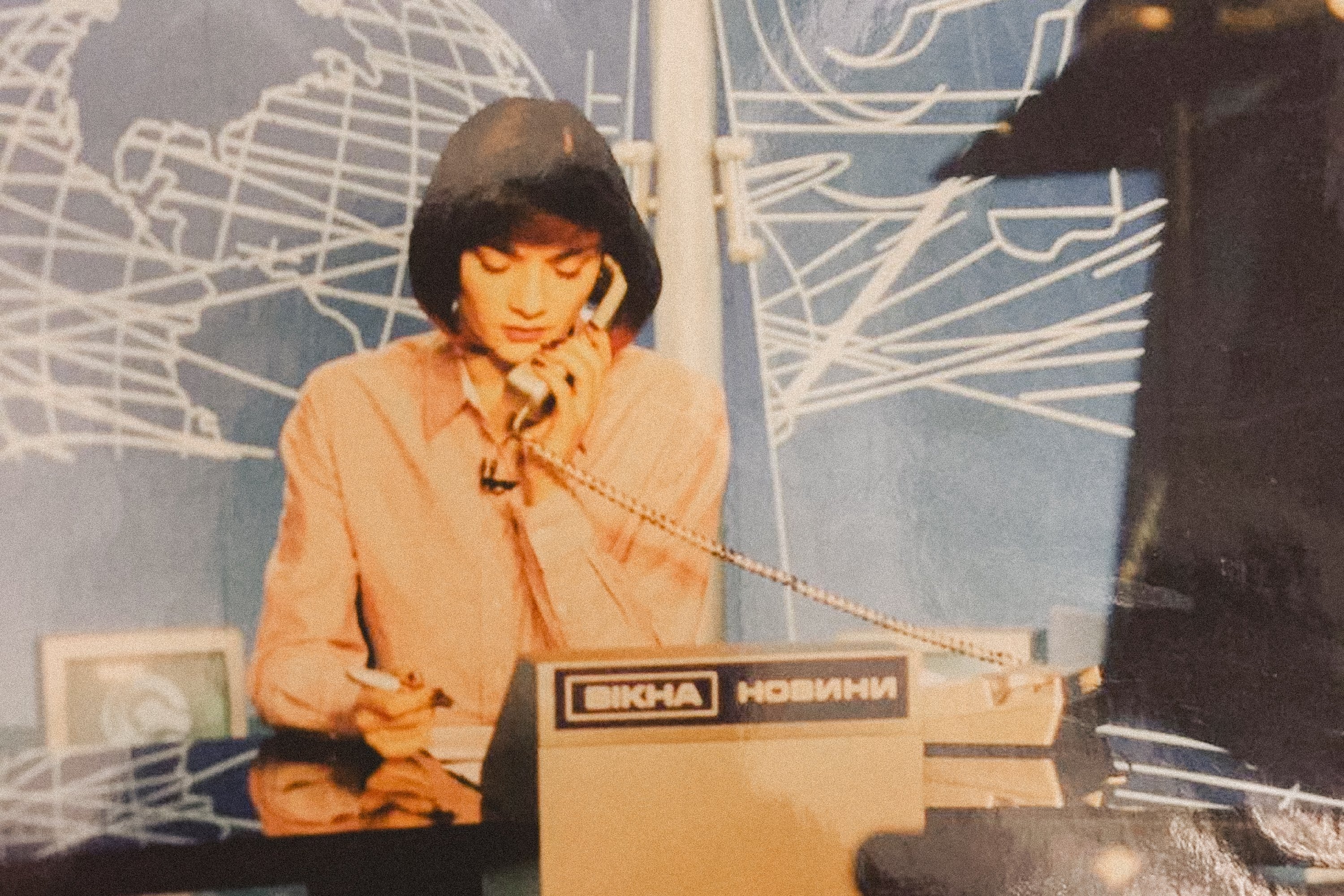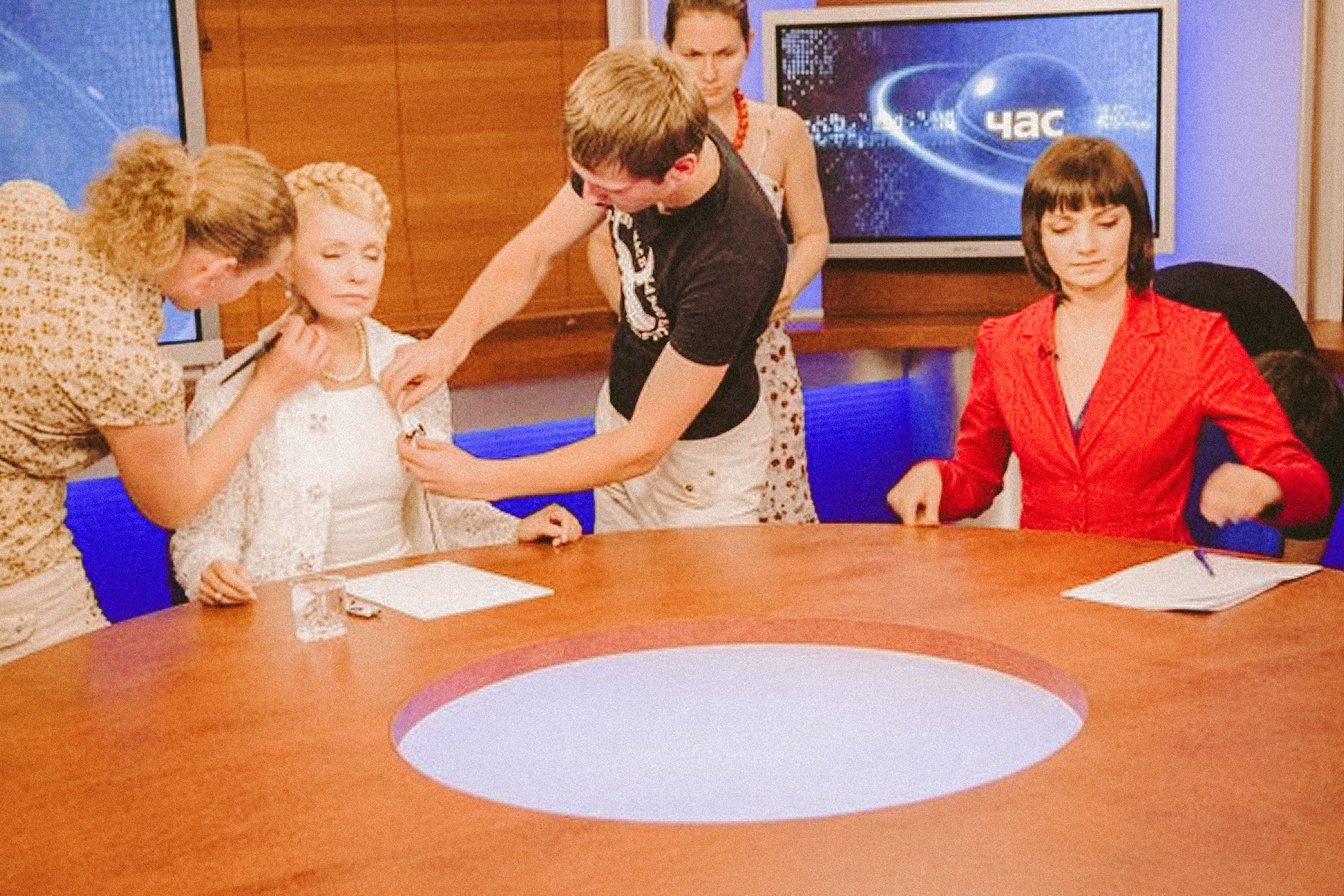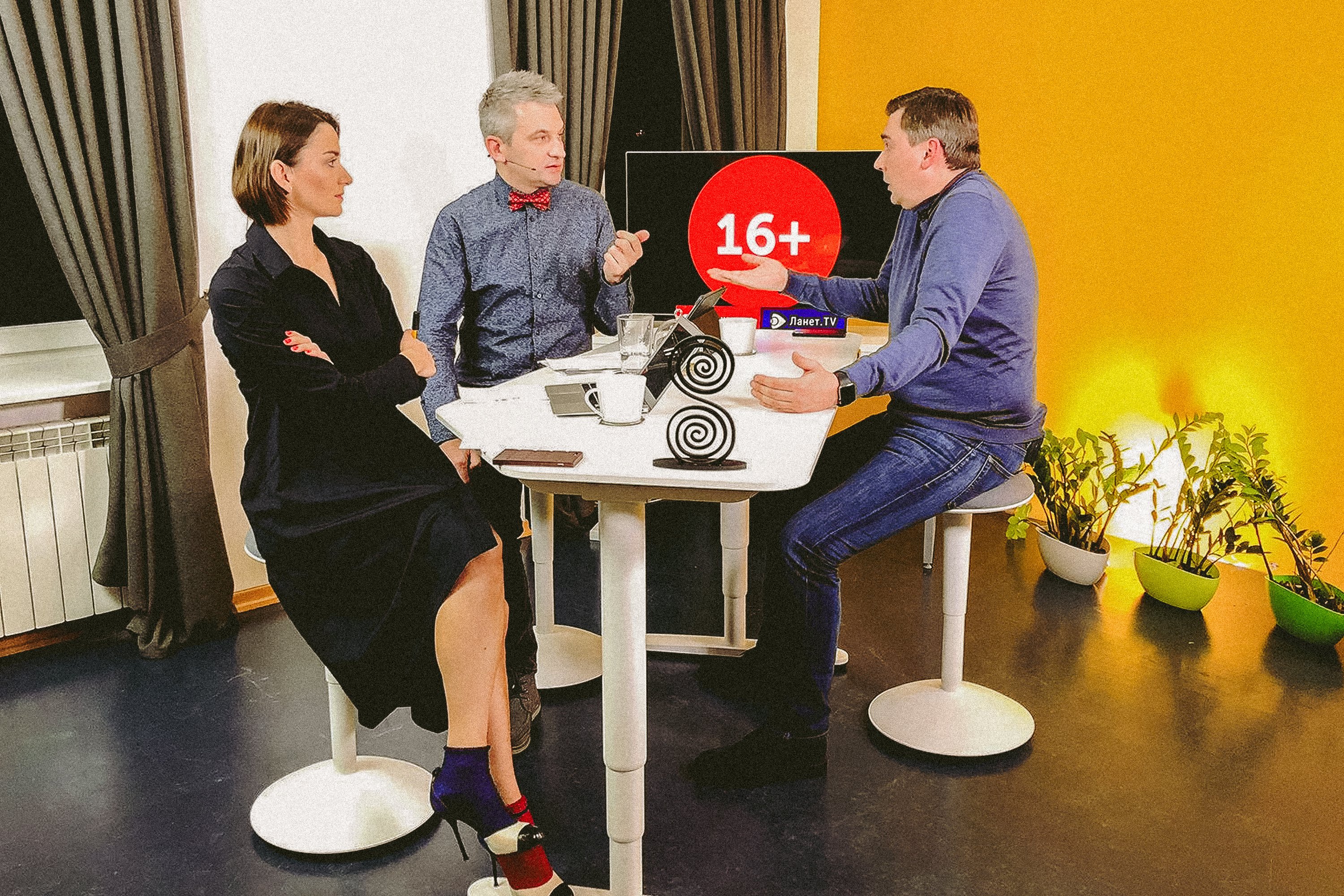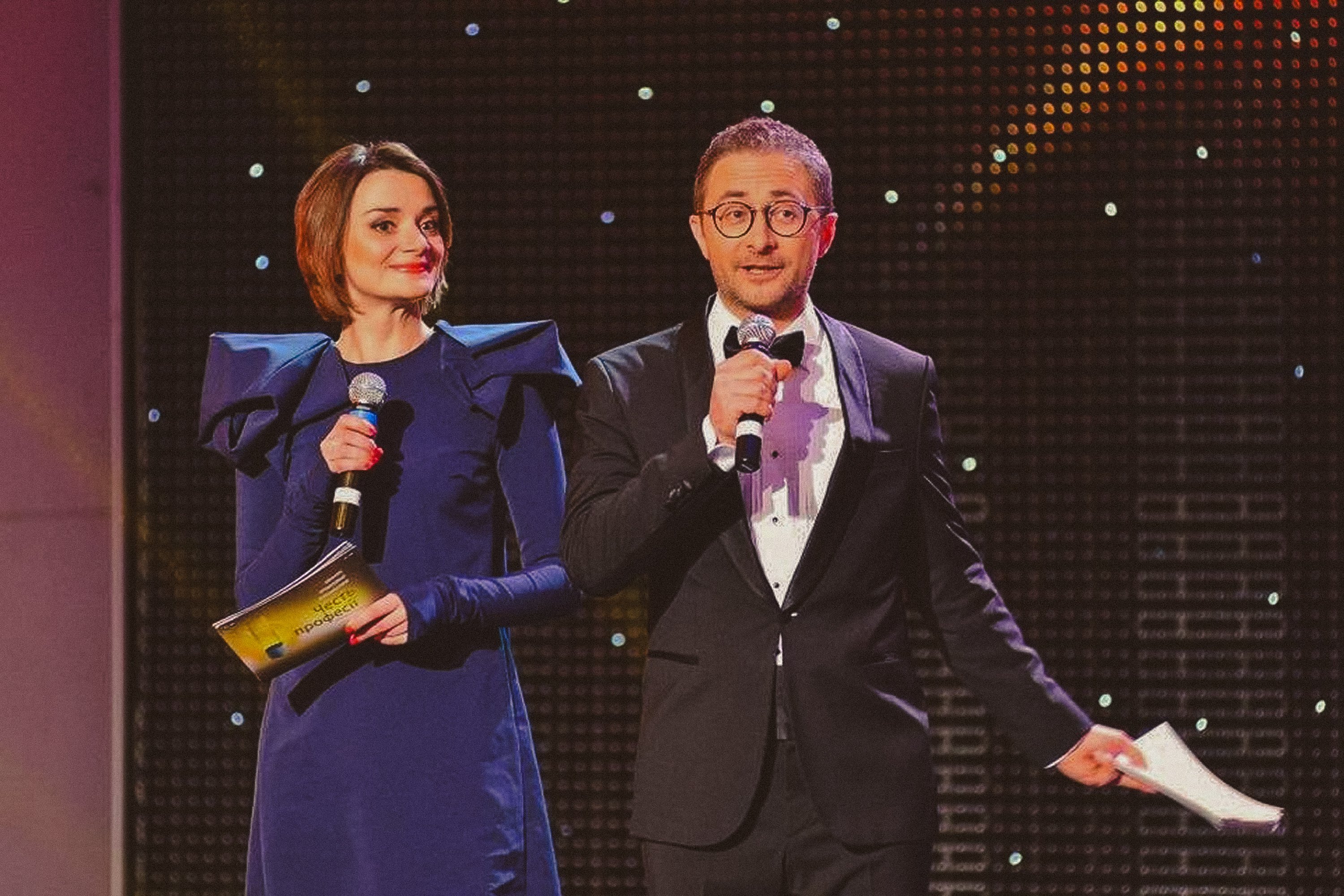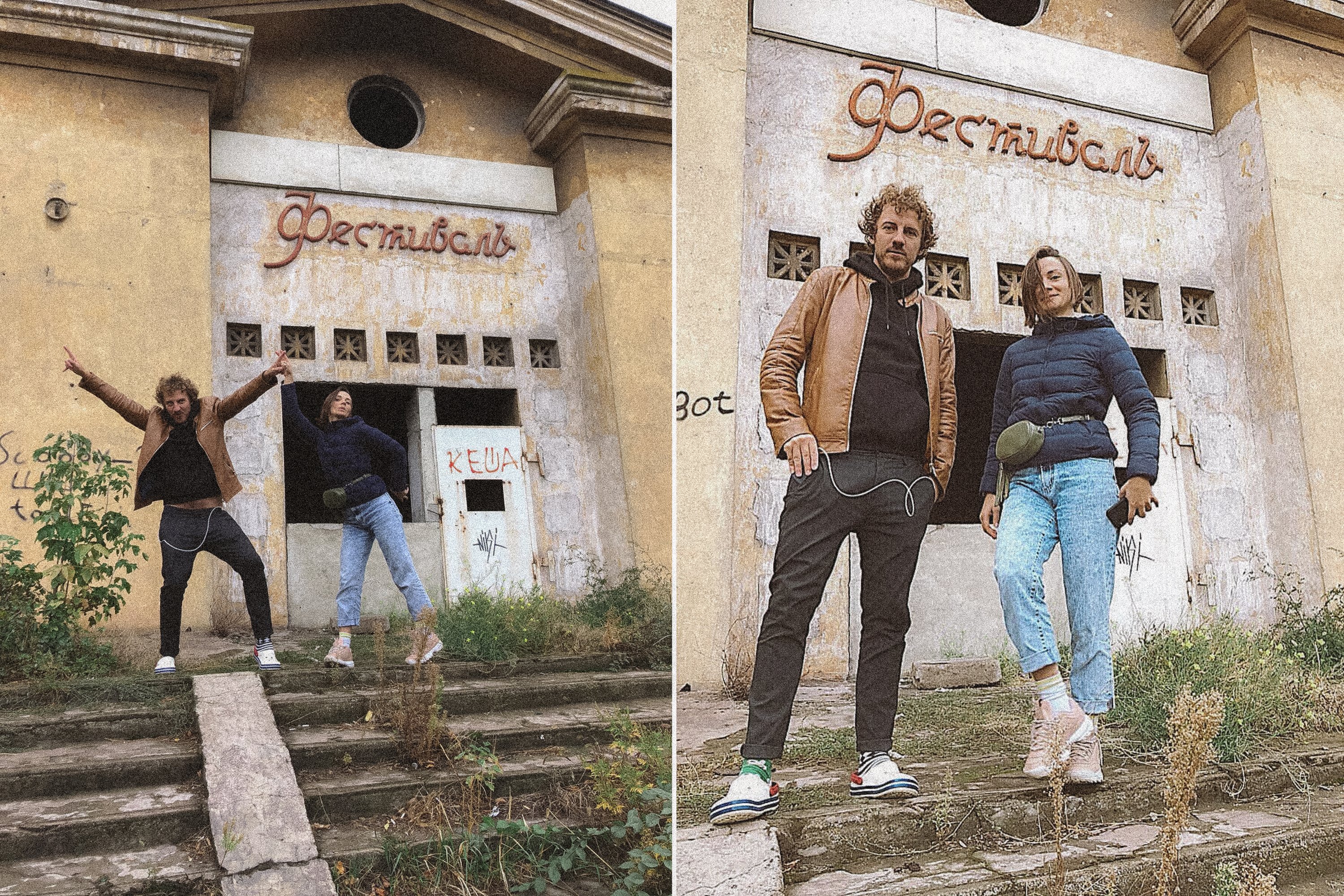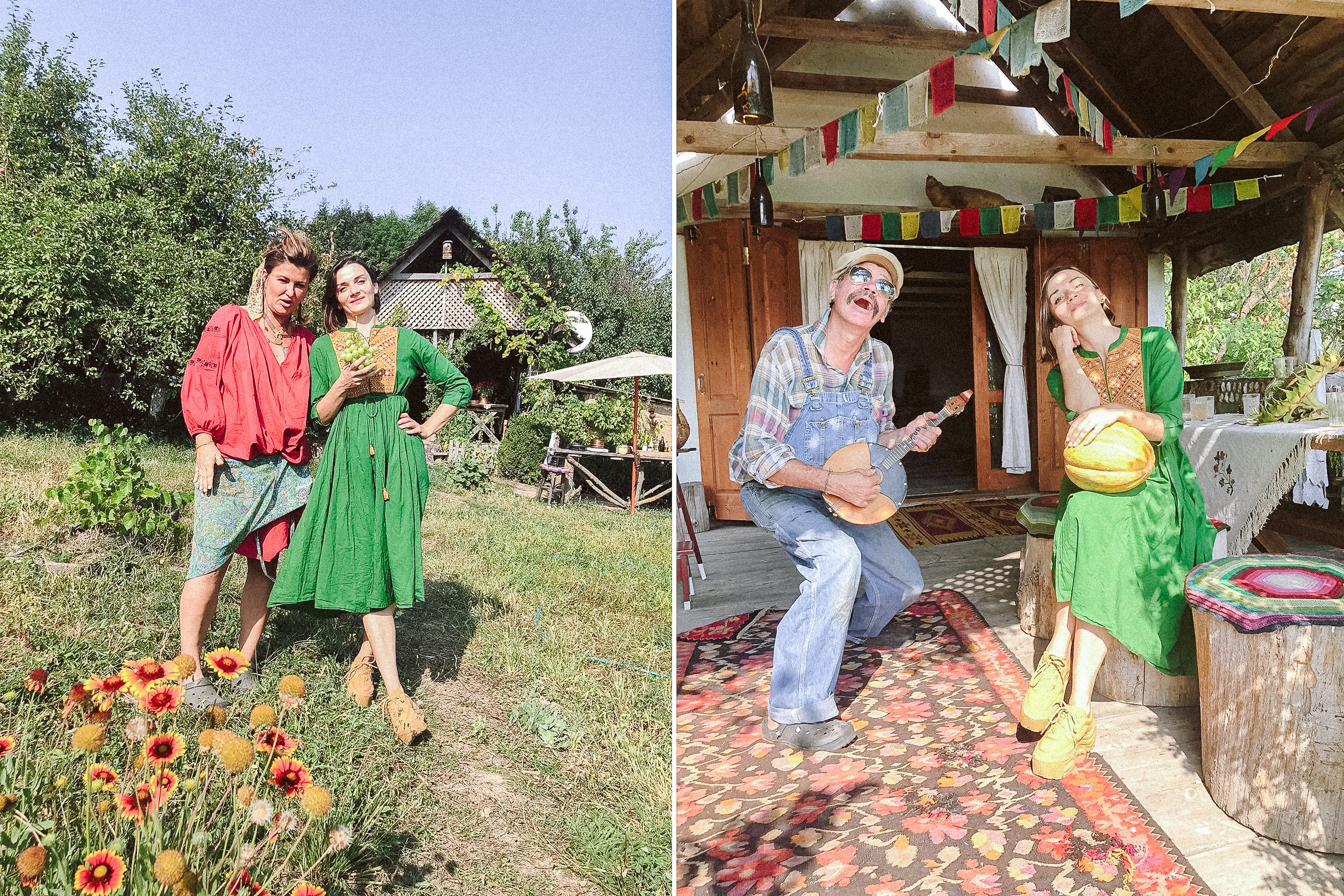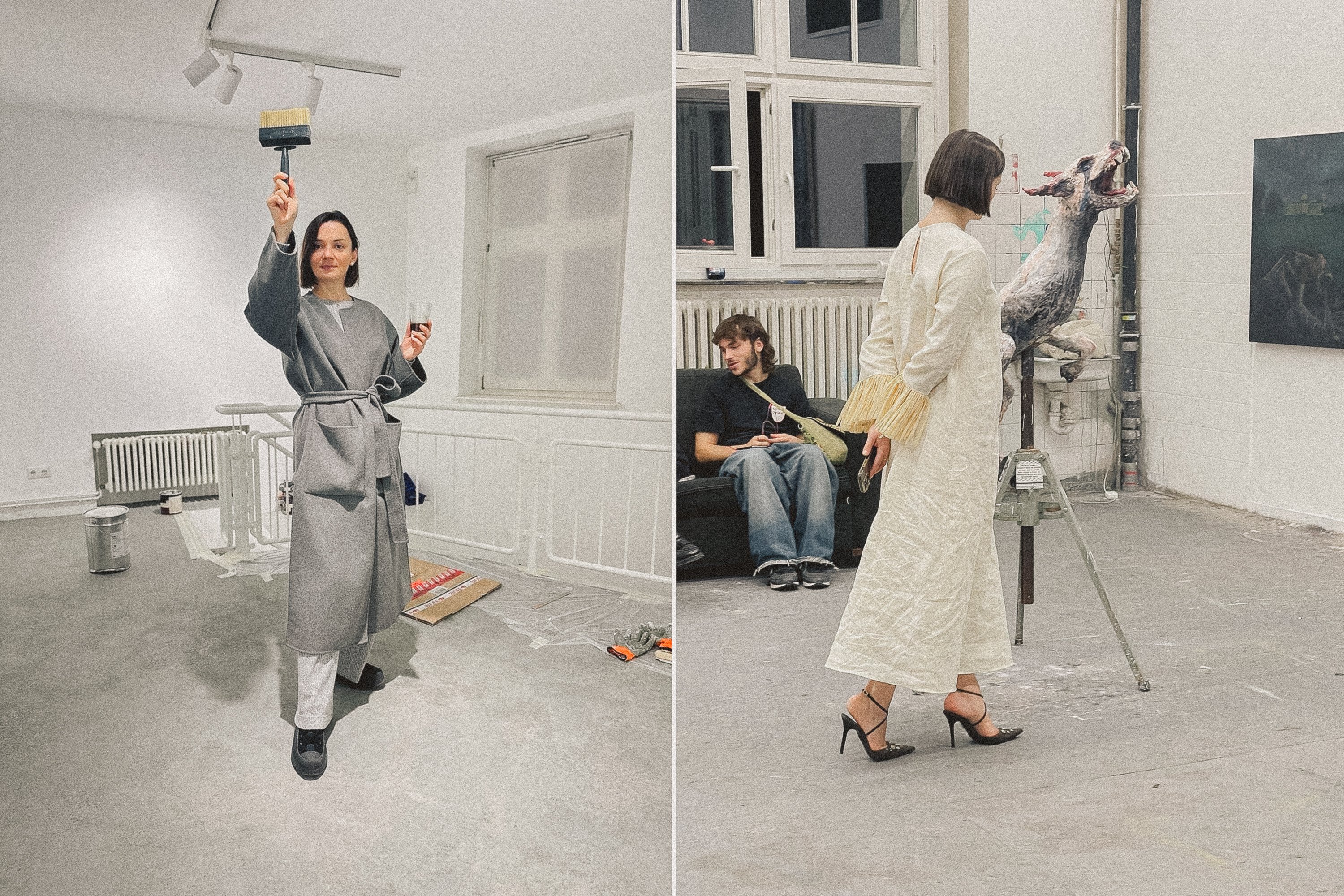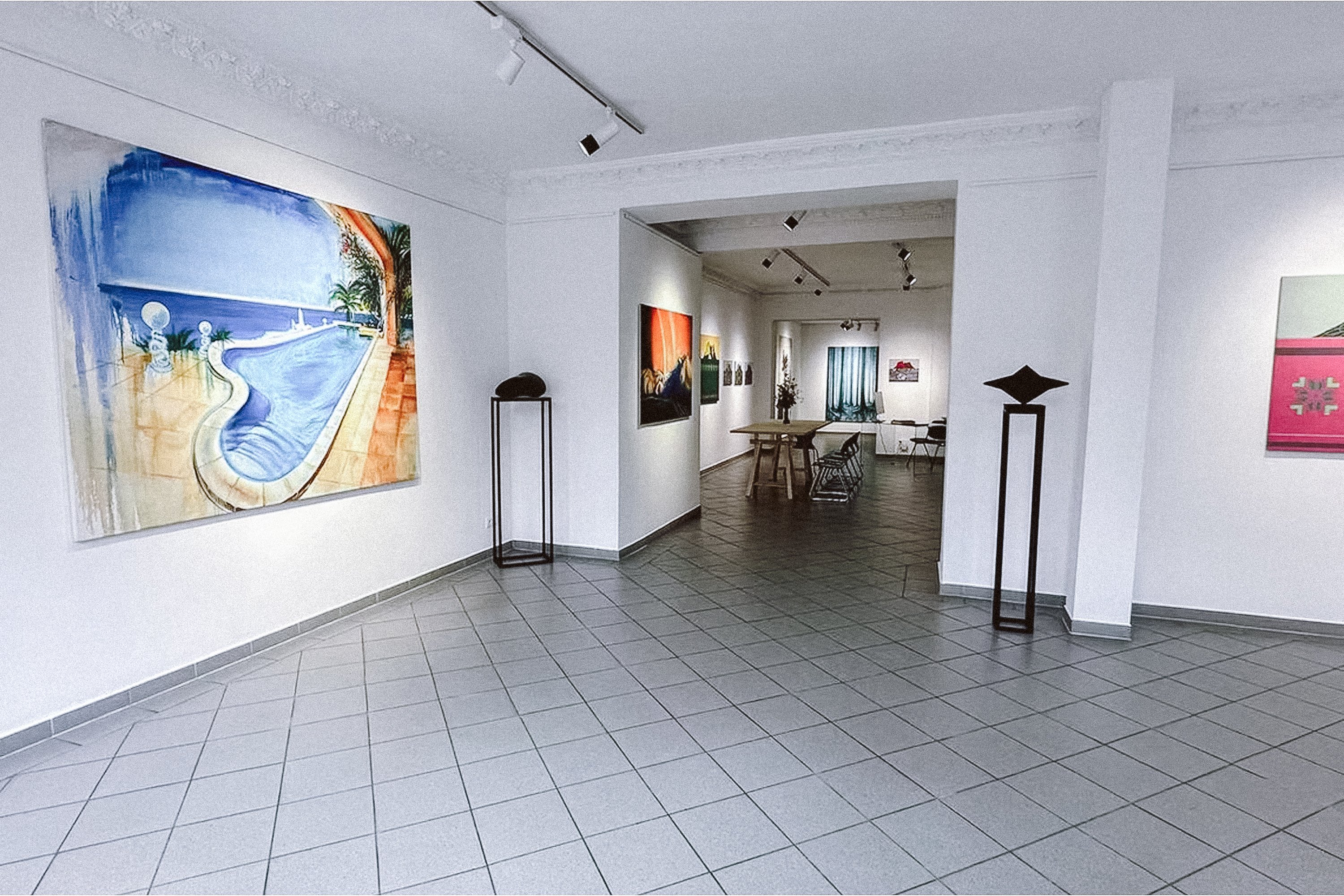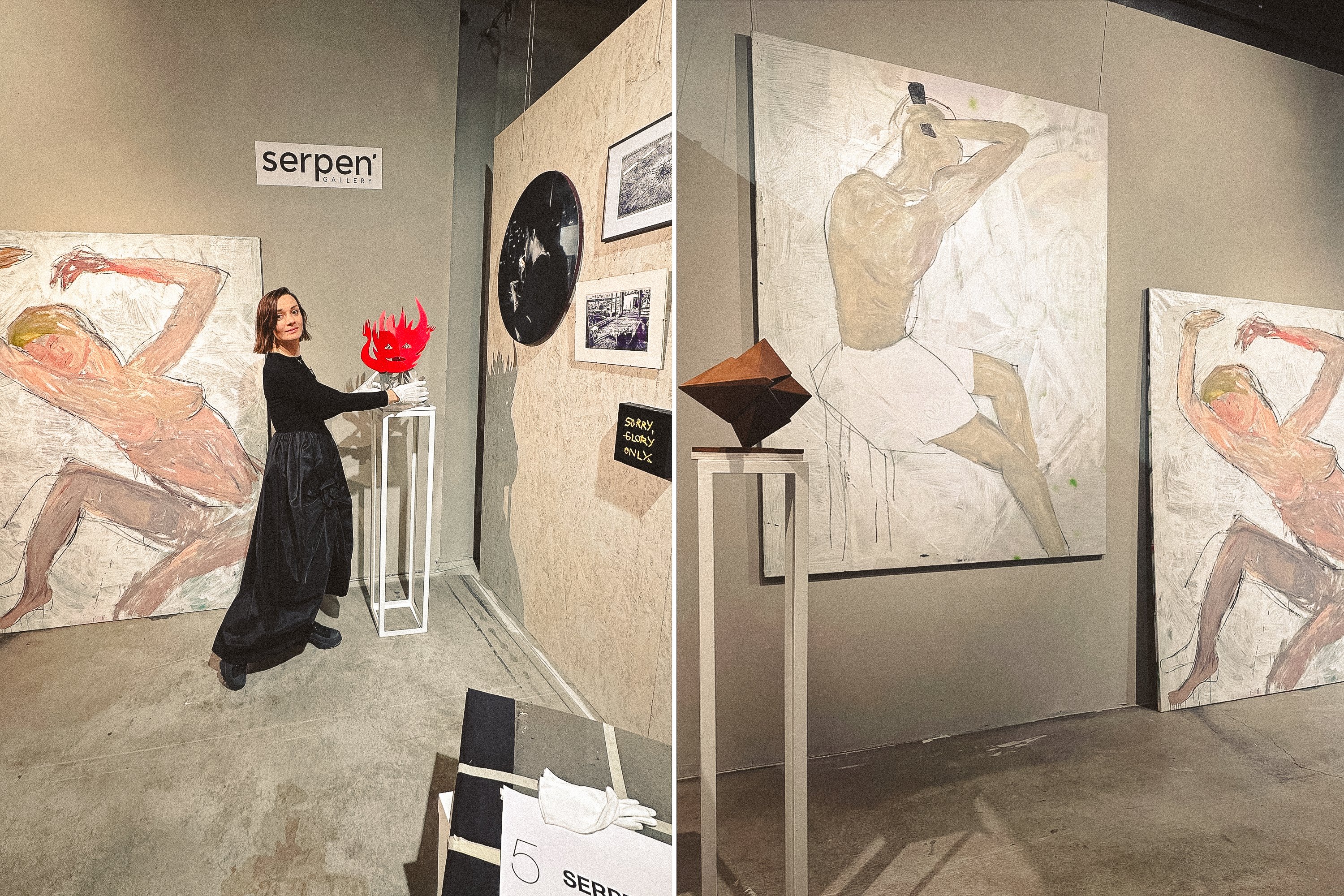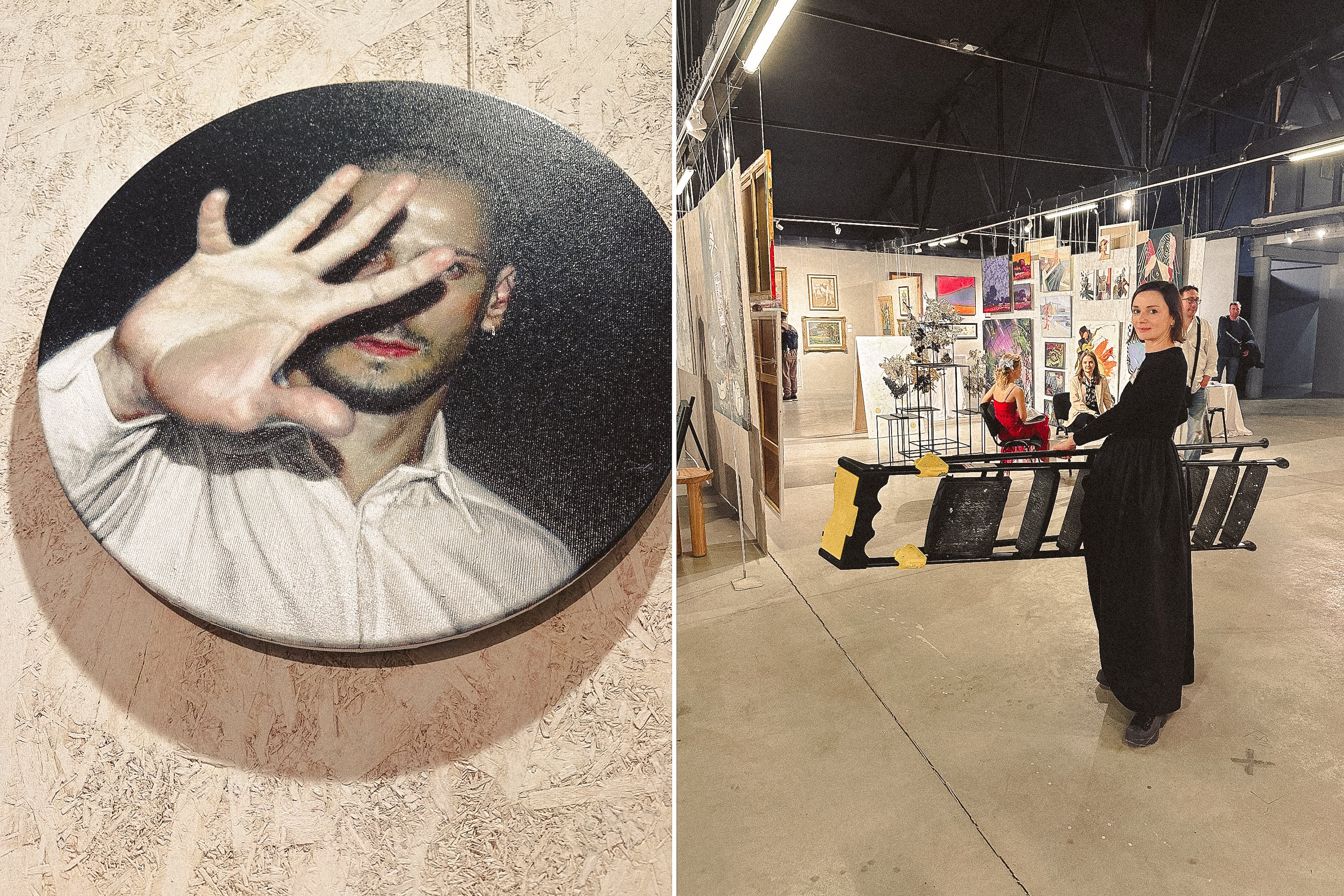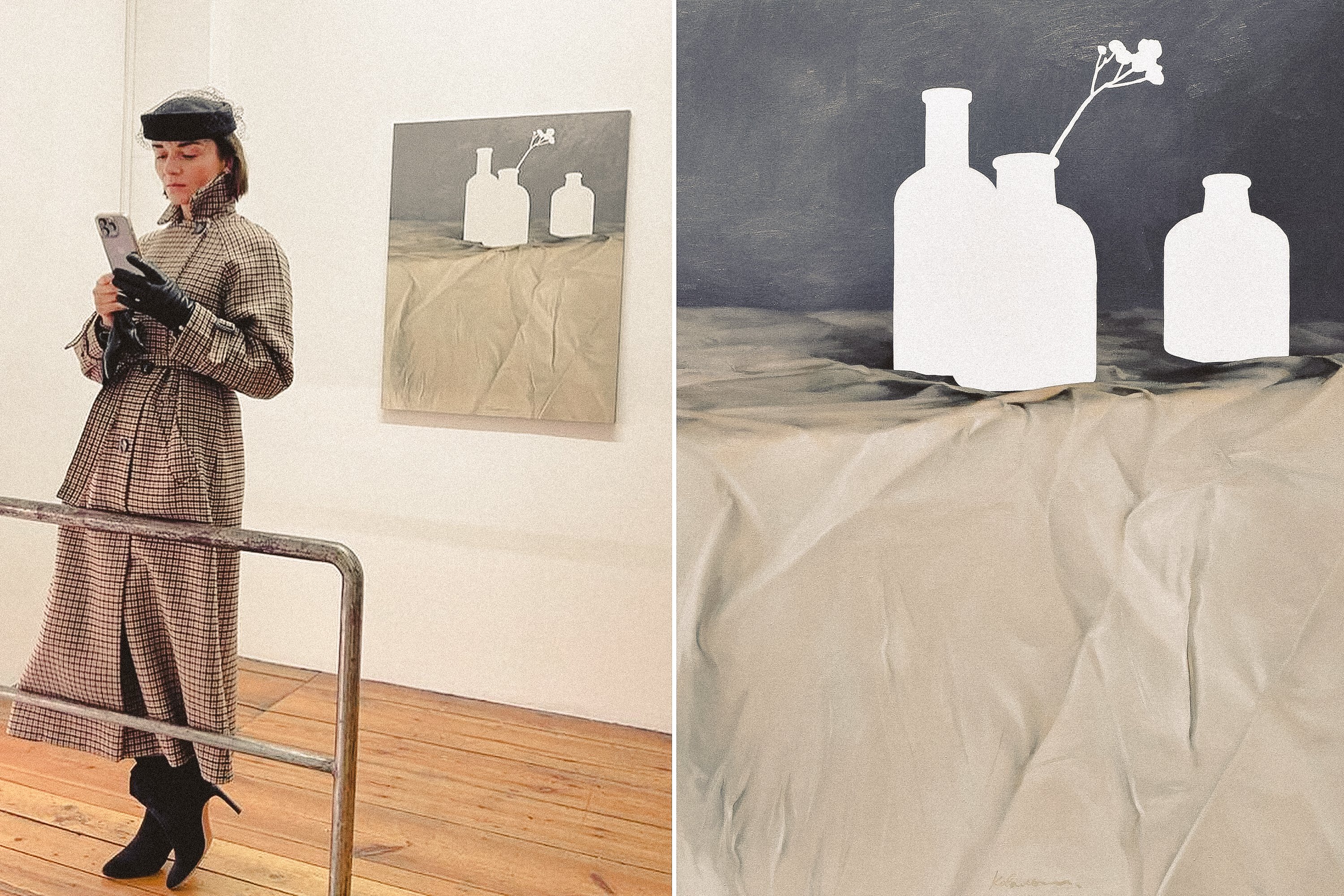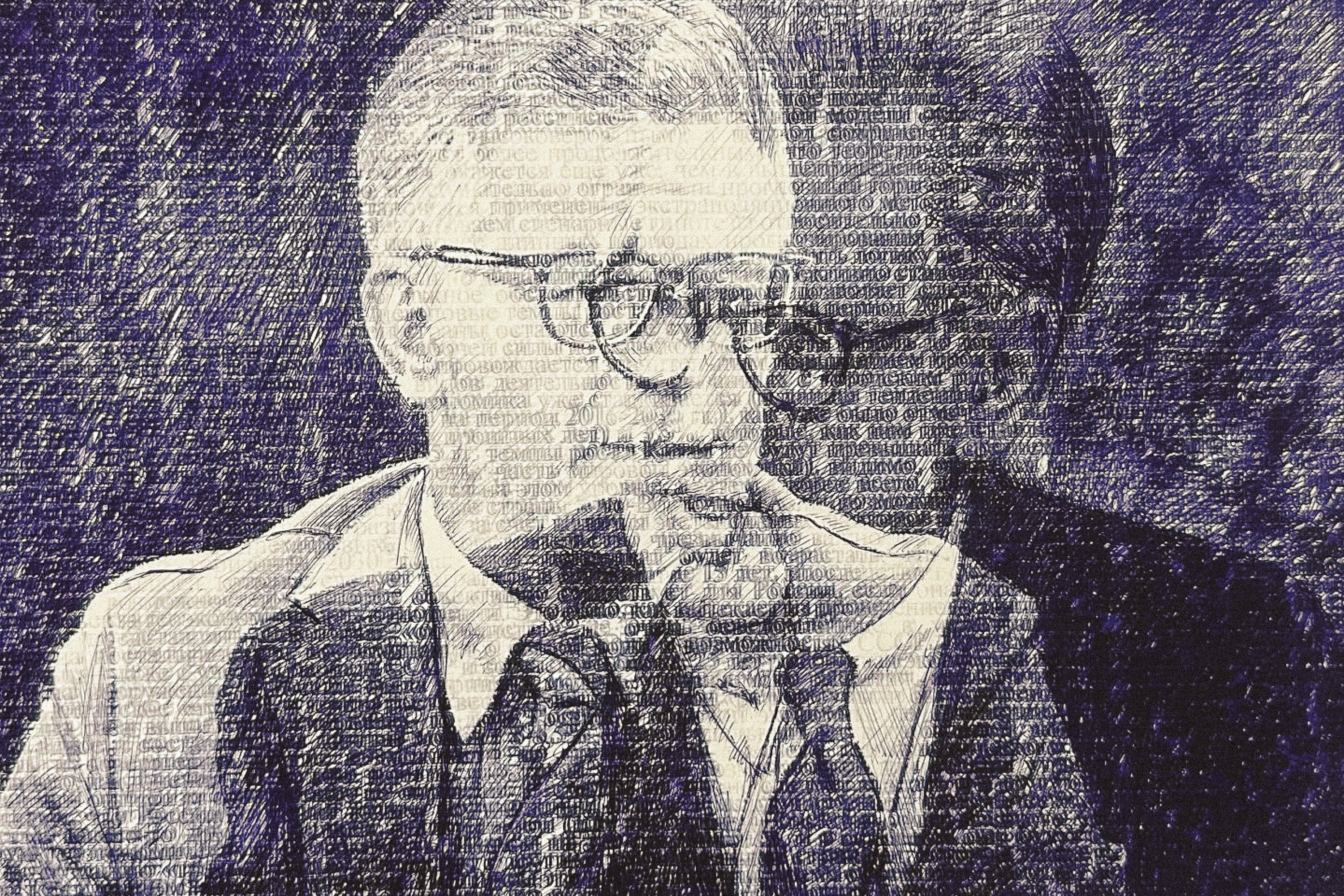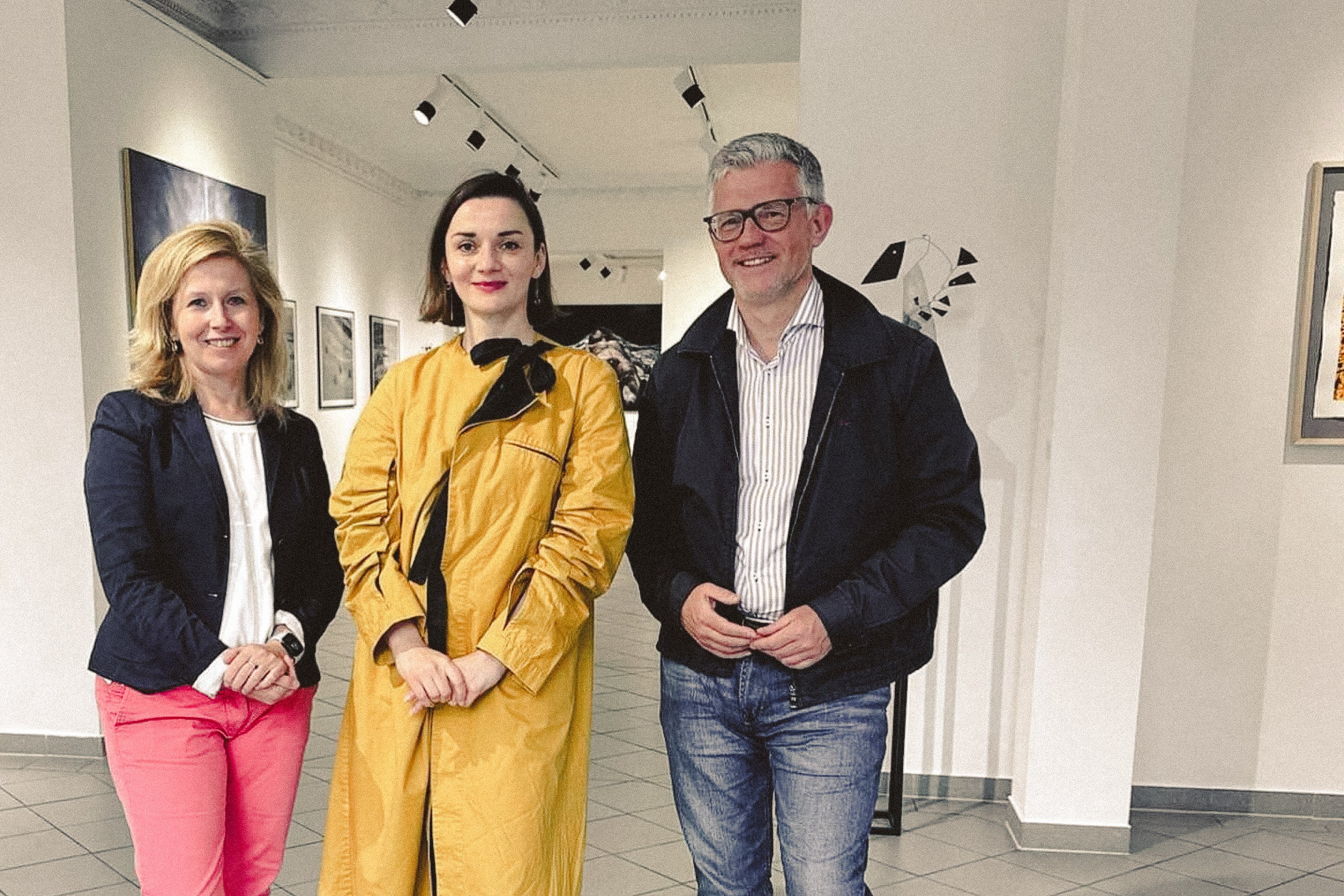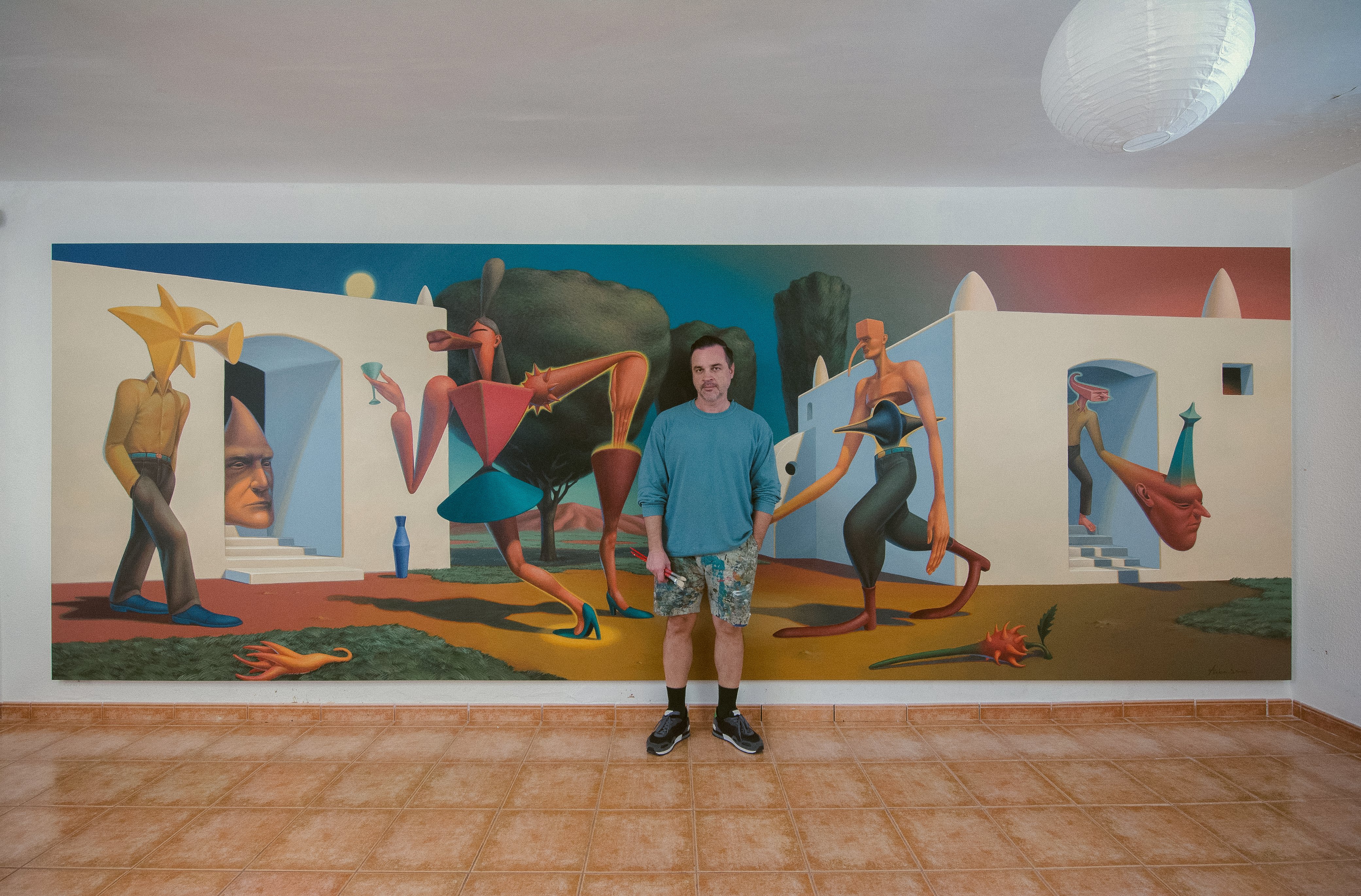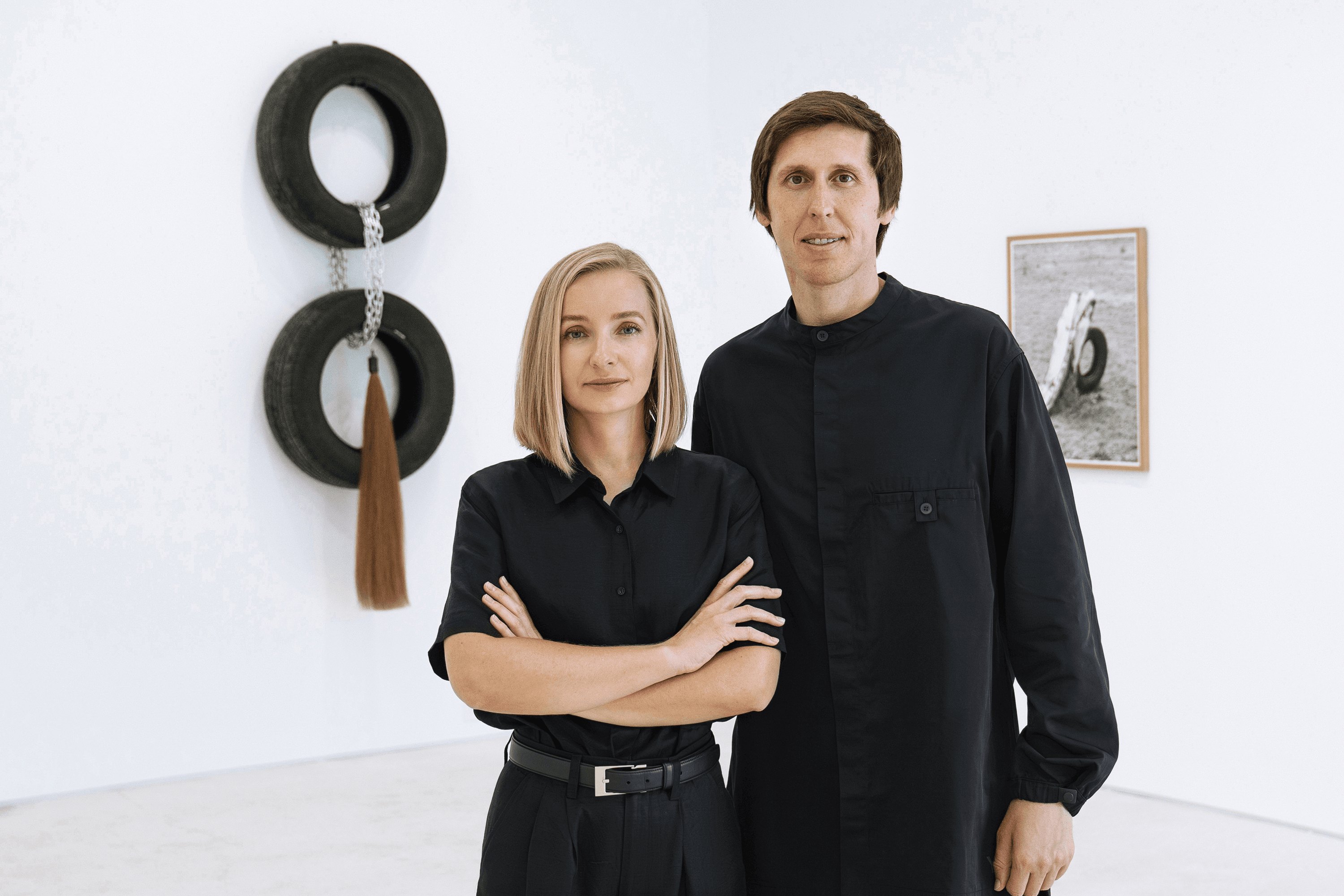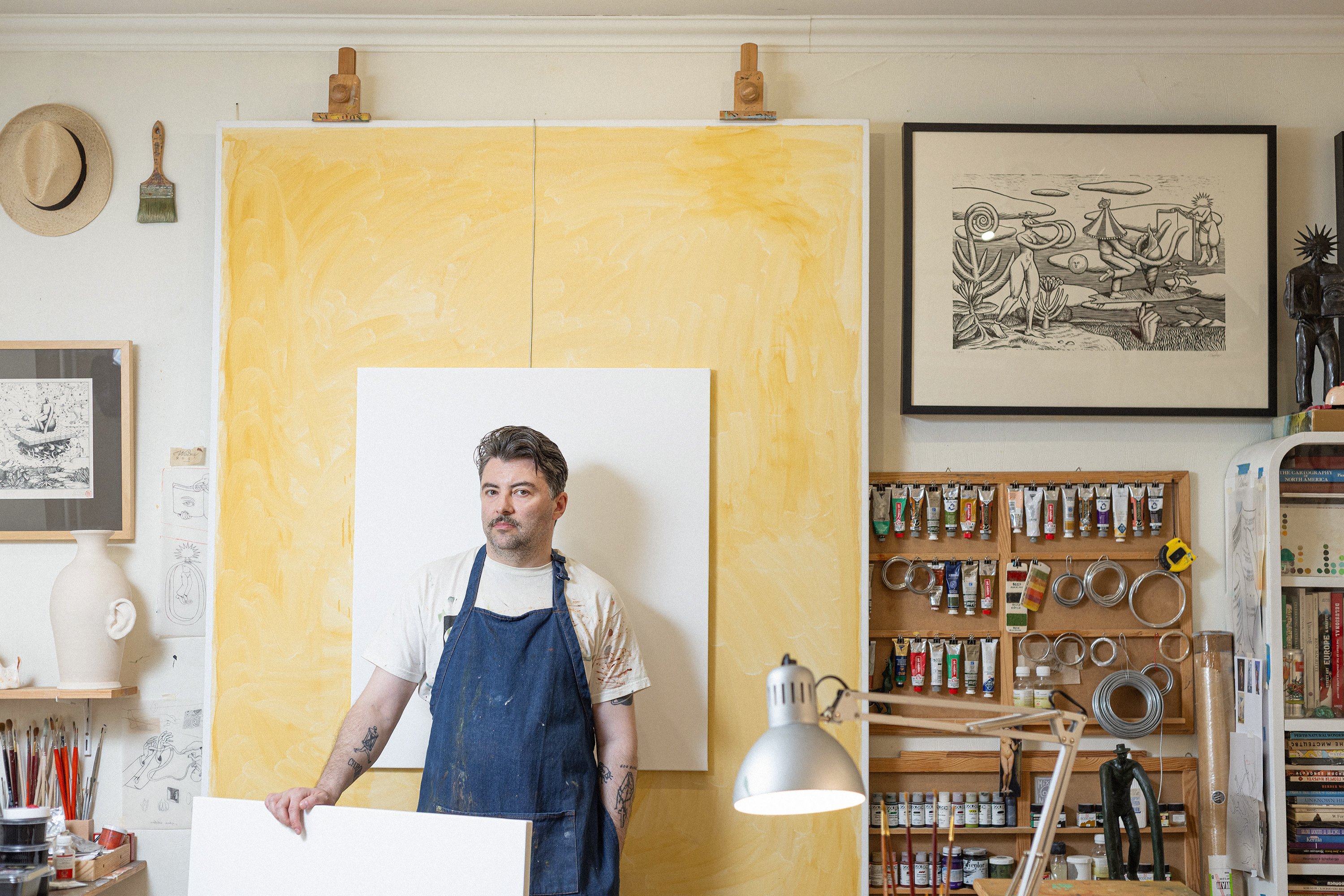In Ukraine, Natalka Yakymovych spent over two decades working in the media industry. She was a journalist, news anchor, editor, and producer with the country’s major media giants like 1+1 Media Group, StarLightMedia, Media Group Ukraine, and the film studio Film.ua Group. But in 2018, her interests took a creative turn — she dove into the world of art and began building a personal collection of works by Ukrainian artists. After Russia’s full-scale invasion, Natalka relocated to Germany and joined the team at the media outlet Amal Berlin. Then, in the fall of 2023, she sold her car and opened Serpen, a gallery space right in the centre of Berlin. Today, Yakymovych promotes Ukrainian art there, and she’s on the lookout for investors to help scale the business. Here’s her story.
1
In central Berlin, minimalist signs mark one tiny gallery after another, and the air smells of damp stone and wine. This is Auguststraße — a legendary street in the art world and a destination for contemporary art lovers from across the globe. Since the 18th century, when it emerged as part of the city’s expansion, its roles have evolved: once home to warehouses and workshops, it’s become, since the 1990s, a hotspot for top galleries, art bars, and designer showrooms. A permanent address on Auguststraße is both a challenge and a privilege — it speaks quality, credibility, and a deep level of trust within the cultural scene.
“The Germans are genuinely surprised that a Ukrainian gallery has a permanent address here,” says Natalka Yakymovych, founder of Serpen gallery. “They know what it means to have a space like this — and so do I.” There are plenty of collectors and gallerists among the locals. They closely watch every new arrival on the street and rarely embrace anything on first glance.
The name of the gallery, Serpen, came to Natalka intuitively. She says she went through more than five hundred name ideas, but none of them felt right. Then, after picking up the keys to the space, cleaning the floor, and glancing out the window to see the word “Auguststraße” staring back at her, it all just clicked. The name had to arrive like a sign — and it did.
The idea for the gallery came after April 2022. Before Russia’s full-scale invasion, Natalka worked in Kyiv as a media producer. When she moved to Berlin in March 2022, she soon realized that working abroad wasn’t enough — she needed to do something meaningful for Ukraine.
“I’ve got years of experience in the creative industry. I know how to build projects, manage people and the process. I knew I could launch something of my own — and use it to promote Ukrainian culture abroad.”
Natalka’s journalism background came as a real asset when it came to communication strategy. She drafted and sent out press releases to both German and Ukrainian media. Two German newspapers covered the gallery’s opening, it was featured on Germany’s public radio, and even streamed live by TSN with commentary from Ukraine’s ambassador. Among the guests were representatives from the Ukrainian Institute of community organizations.
Serpen officially opened its doors on November 11, 2023. Natalka expected no more than a hundred guests, but more than 500 showed up. Within hours, all the printed materials available in Ukrainian, English, and German were gone. The printer ran out of ink, trying to keep up. They had to make two supermarket runs just to keep the wine and beer flowing. Guests stayed late into the evening.
“It was incredibly touching to see that many people at the opening — Ukrainians, Germans, Americans, Danes. A lot of them are now our collectors. And that matters, because this art is now telling Ukraine’s story inside their homes.”
The gallery opened with its debut exhibition, Through the Fire, showcasing works by six Ukrainian artists: Artem Volokitin, Viktoria Pidust, Mykhailo Alekseyenko, Volo Bevza, Roman Mikhaylov, and Oleksii Zolotar. Some create their work in Kyiv to the sound of air raid sirens, others have relocated to Lviv, and some live in exile. Yet each of them channels the same pain that moves through fire and transforms into new forms of expression.
In the year and a half, Serpen has hosted over 10 exhibitions and around 50 cultural events. Among them was a solo show by Oleh Tistol and Valeria Trubina, Place of Power. Restricted Access — a reflection on territories lost due to occupation and annexation, places that held deep personal meaning for the artists.
2
Natalka Yakymovych was born in 1980 in Lviv, into a family of journalists. From a young age, she had a sharp sense of justice. As a child, she dreamed of becoming a lawyer. But in Grade 11, she started writing articles about cultural events for her school newspaper. In the end, she chose journalism as her path — a tool, she believed, that could change the world just as powerfully as law.
She enrolled in the Faculty of Journalism at Lviv University and, by the age of 20, began working at one of the country’s major TV channels, STB. he started as an editor and later became a news anchor on the Vikna program. Back then, news coverage often served the political interests of media owners, turning journalism into a tool of manipulation. Even then, Natalka saw traditional news formats as just a starting point. She wasn’t interested in simply reporting facts — she wanted to create a meaningful, coherent media product.
In 2004, Natalka welcomed her son, Viktor, into the world. That same year, Ukraine was gripped by protests against election fraud by candidate Viktor Yanukovych — the Orange Revolution. One of the few media outlets which stood out reporting boldly on the events was Channel 5. After Viktor Yushchenko’s victory, Natalka joined the team there, where she hosted live broadcasts and special guest segments. In 2006, Focus magazine named her one of the top 25 TV presenters in Ukraine.
Starting in 2007, Yakymovych set her sights on creating more author-driven content. She launched her own project, Faces. CITY, on the channel of the same name, and later took part in relaunching the news studio of the “Ukraina” network in Kyiv, after it had relocated from Donetsk.
Yakymovych eventually became a producer for projects at “1+1 Production,” working on projects that blended documentary storytelling, social reporting, and artistic reconstruction. Her credits include ATM Woman — a film about Ukrainian women living in exile; Gypsy Blood — a raw look into the lives of the Roma community; and Tina Karol: The Power of Love and Voice — a concert documentary.
In 2014, Ukrainian television was undergoing seismic changes. The Revolution of Dignity, Russia’s annexation of Crimea, and the war in Donbas transformed not just the national discourse but also the very function of media. TV began to rethink its role, shifting away from pure entertainment and leaning into more in-depth formats. Documentary films, special features, and series started telling real stories of war, loss, dignity, and defiance.
Yakymovych recognized this shift. In 2014, she became the creative producer of Operation Crimea, a film about the Russian military’s takeover of Crimea. That same year, she produced several defining projects — including The Winter That Changed Us (1+1), a powerful chronicle of the Revolution of Dignity that captured not only the events but the societal transformation it sparked; and The Heavenly Hundred (together with Babylon’13), a searing, personal account of Ukraine’s modern history through the lens of individual tragedy and courage. In 2018, Yakymovych stepped into the role of General Producer for Film.ua Group’s cable networks. She launched several educational and cultural projects, including the series and film Borshch: The Secret Ingredient — a rich, gastro-cultural exploration of Ukraine’s national dish.
She’s always been someone who thinks outside the box. While running day-to-day content production across four television channels, she also juggled documentary films, commercials, music videos, and scripted projects. One of those was Chervona Ruta, a musical intended to be Ukraine’s answer to La La Land. But after four years of high-speed production, the pressure finally caught up with her. By the start of 2022, Natalka was deep in emotional and professional burnout.
3
In March 2022, Natalka went to Berlin. Drained both emotionally and physically, he stepped away from all her Ukrainian projects to give herself space to reset. A family friend offered her a place to stay rent-free for six months, which allowed her some time to recover. But Yakymovych was never one to rest for long. She first took a job at a German-American company, and soon after began writing for Amal Berlin, a publication for Ukrainian refugees. The work brought her both purpose and stability — her contract still covers health insurance, and the flexible 20-hour work week gives her room to pursue other projects.
The idea of opening a Ukrainian gallery in Berlin took shape slowly. Even though the city had a large Ukrainian community, there was still no dedicated cultural space. Events were mostly held in libraries, cafés or church halls — some of them, disturbingly, run by pro-Russian activists. In the spring of 2023, Natalka began exploring rental opportunities and connecting with others who shared her vision for an independent cultural hub.
Chance played an important part. The first apartment in Berlin where Yakymovych lived with her partner, sculptor Oleksii Zolotar, was located directly across from the Helie Kopie gallery. Oleksii made friends with the gallery owner, who offered him a solo exhibition. A few months later, the gallery owner approached Natalka with an unexpected offer — she was retiring and wondered if Natalka might want to take over the space. It was one of those rare chances that felt too pass.
Securing the lease wasn’t easy. Natalka had to present her concept and negotiate with the property owner to win him over. Initially, the landlord leaned toward another candidate, but eventually came back to Natalka’s proposal. During the interview, the landlord was most interested in the artistic vision and concept for the gallery, not the paperwork. When he said it was important to preserve the space for art, “no kebabs,” Natalka responded with a smile: “No kebabs — but maybe some borshch now and then.” That sealed the deal, and they signed the contract.
There were no major bureaucratic hurdles in opening the gallery. Natalka registered a local sole proprietorship — a Gewerbe, and hired a German accountant who still handles the books today. The renovation took just a few months, thanks to a team of Ukrainian builders. The project launched without investors or big-name sponsors. And that’s how a new Ukrainian cultural space came to life in the heart of Berlin — with a mission to support art, identity, and community.
4
During her university years, Natalka learned art history and cultural studies, but her first experience as an art dealer came by chance — she simply helped a friend sell a valuable painting. After that, things evolved naturally: she got to know artists, gallerists, and dealers. Now and then, she would resell works by iconic Ukrainian artists — including pieces by Mariia Prymachenko and Tetiana Yablonska. The turning point came in 2020 — that’s when Natalka Yakymovych began building a collection of her own. Her first major purchase was a large-scale painting by Roman Mikhaylov at the Bereznytsky Art Foundation. From then on, collecting shifted from a casual interest to a thoughtful and deliberate pursuit.
Today, Natalka’s collection includes names that help define the face of contemporary Ukrainian art: Olena Pryduvalova, Viktor Kravets, Mykhailo Alekseyenko, Yurii Sivyryn, Oleksandr Chekmenyov, Dmytro Yevseiev, Akhra Adzhindzhel, Matvii Vaisberg, Iryna Feder, Nataliia Korf-Ivaniuk, and others. Yakymovych’s approach hasn’t changed since her journalism days — it’s not just about aesthetics or investment. For Natalka, collecting is a way of documenting history as it’s being written, here and now.
To open Serpen, Natalka sold her Suzuki Grand Vitara. The €17,000 she received was enough to sign the lease, do some touch-up renovations, and breathe life into the space. The gallery came with minimal but mission-critical infrastructure: a secure art storage area, decent lighting, and a few functional pieces of furniture, including a massive wooden cabinet for storing prints and photographs.
Yakymovych deliberately chose not to go the grant route. “You’re either a non-profit, always reliant on funders and bound by their rules, or you’re a business — and then you survive on your own,” she explains. Germany does offer programs to support women entrepreneurs, but few are tailored to the cultural sector. “A gallery isn’t a café or a hair salon. I can’t submit a standard business plan. Art doesn’t sell on a weekly schedule,” Yakymovych says. At the same time, she admits the gallery is gaining momentum month by month — and now, she’s ready to have serious conversations with potential investors, patrons, or sponsors who understand what it means to support a socially responsible business.
Now, 55% of Serpen Gallery’s clients are Ukrainians who’ve been living abroad for a long time. The biggest sale Natalka has made so far was a piece by Oleksandr Roitburd, which sold for €21,000 in a remote dealer transaction in Ukraine. From the gallery itself, she sold two works by Valeria Trubina for €7,000. One of Serpen’s standout artists is Apl315, a street artist from Odesa, whose series on the Odesa catacombs sold in the price range of €500 to €800. Strong storytelling played a key role, Natalka says. The artist created the series based on real graffiti and symbols left behind by people in the limestone tunnels of Odesa over the past three centuries. In one of Berlin’s most urban areas — Schönhauser Allee — Apl315 painted a large mural from the same series, and it instantly caught the eye of locals. As a result, the buyers of his work ended up evenly split — half Ukrainian, half German.
The absolute favourites among local Berliners turned out to be works by the duo Etching Room 1. Even their higher price point didn’t deter buyers — their signature dark humour struck a chord that felt both universally relatable and well appreciated. “Sometimes it feels like it’s the strongest cultural bridge,” Natalka jokes.
5
Art carries real weight in the German capital, but Berlin is not a city of big money. Its socially oriented structure, the absence of major industrial giants, and a strong freelance culture don’t exactly create ideal conditions for high-end art sales. Natalka recalls one almost comical meeting at the Berlin Senate, where she asked about the financial model behind the city’s galleries. A government official candidly admitted that most galleries are “employment projects for children from wealthy families.”
To give the business real breathing room, Natalka says it would take just 12 to 20 major sales a year. One significant sale each month, and the gallery could not only cover its basic expenses, but also start planning for the future. In her vision, those buyers could be members of the Ukrainian business community abroad — people who, by purchasing works from Ukrainian artists, would also be investing in cultural diplomacy. Natalka is convinced: Ukrainian art will only reach a new level when Ukrainians start buying Ukrainian.
In Germany, even small offices have art on their walls. The more established the company, the more visible the art collection. Walk through Berlin’s Mitte district at night and peer into the windows, and you’ll notice nearly every flat has paintings, prints, or photographs.
Across Europe, the pattern is clear: Germans buy German art, the French buy French art. Ukrainians need to pick up that habit, Natalka says. In Germany or France, buying a painting isn’t an event — it’s a lifestyle, a part of reputation. The problem, as Yakymovych sees it, goes back to the Soviet era, which stripped everyday Ukrainian life of aesthetics. People are not used to standing out — art came to be seen as “impractical.” And as long as wealthy Ukrainians keep overlooking their artists, she warns, we risk losing an entire national school of art that is only now beginning to find its voice internationally. “It’s either Repin or Damien Hirst for us — nothing in between. But what we really need are tens of thousands of informed collectors. This isn’t just about the market — it’s about identity.”
Berlin’s gallery scene is fiercely competitive. And until Ukrainian artists start showing up on the programs of major institutions or in the collections of local foundations and museums, they’ll continue to be viewed as “newcomers” — and priced accordingly, often at a discount. That’s why it’s essential to invest in visibility — professional documentation, artist residencies, exhibition catalogues, and relationships with critics. But most importantly, Yakymovych says, there needs to be a shift in how Ukrainian businesses approach their involvement in culture. For her, the role of Ukrainian gallerists abroad goes far beyond selling art — it’s an educational mission. It’s not just about promoting names or schools. It’s about shaping a broader perception: that Ukrainian art is serious, valuable, distinct and fully capable of standing alongside Europe’s finest. And that kind of shift doesn’t happen overnight. It takes time, consistency, and attention to every detail — from the quality of visual presentation to the positioning strategy for each artist.
The gallerist believes that prices should remain consistent no matter where the artwork is sold. The logic is simple: a buyer shouldn’t question whether a piece in Berlin might cost less in Kyiv, or worse, be available straight from the artist’s studio at half the price. This is a matter of reputation, not only the gallery’s but also for protecting the artists, too. Price discrepancies discourage both investors and viewers.
That’s why the disconnect in how art is valued in Ukraine feels especially sharp. As Natalka puts it, there’s a strange paradox: spending tens of thousands on a Birkin-style bag or a luxury car is seen as completely normal, but putting that same money toward a piece of art still feels like a stretch for many.
6
Natalka breaks down her financial model simply: she sells art to cover rent, logistics, insurance, and to pay herself at least a basic salary. The gallery isn’t fully self-sustaining yet — all of the revenue is reinvested into its growth. However, the number of visitors continues to grow each month, a circle of loyal clients is forming, and new partners are lining up for future collaborations.
Natalka is open about it: for the gallery to level up, additional capital is needed. She already has a vision to expand the exhibition space, launch an educational program, and create a digital archive of contemporary Ukrainian art. What she envisions is a multi-purpose art hub — something that matches the needs of the growing community around Serpen.
The gallery already hosts regular events: literary evenings, presentations, tastings. A book club is now up and running — an informal platform for discussing contemporary Ukrainian literature. Soon, a language café will open — a space where members of the Ukrainian diaspora, as well as newcomers to the language, can practise speaking in a live environment.
But to bring her vision to life — an integrated space blending gallery, café, bookstore, and a shop for Ukrainian-designed goods and souvenirs — she’ll need an investor. “I’m actively seeking funding,” Natalka says. “This project already has a community and a reputation — now it just needs a partner who can see its long-term potential.”
Natalka admits — Berlin was never her dream. The move was a forced decision. “The hardest part,” she says, “is admitting that you actually live here” — not in a practical sense, but on a deeper, existential level. After the move, life became a series of short-term segments — another three months, another six. She didn’t start thinking about the long term until she decided to open her gallery. That was the moment she started putting down roots — even if she knows they can always be pulled up again, should the time come to return home with new experience.

